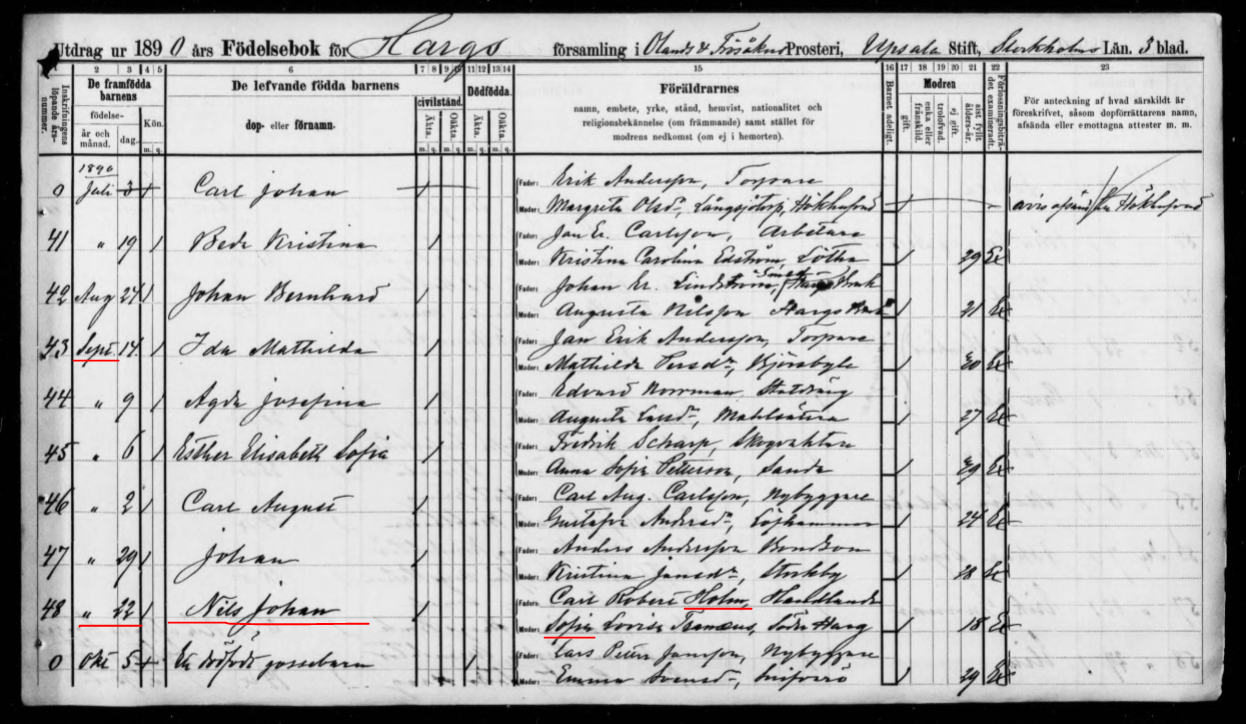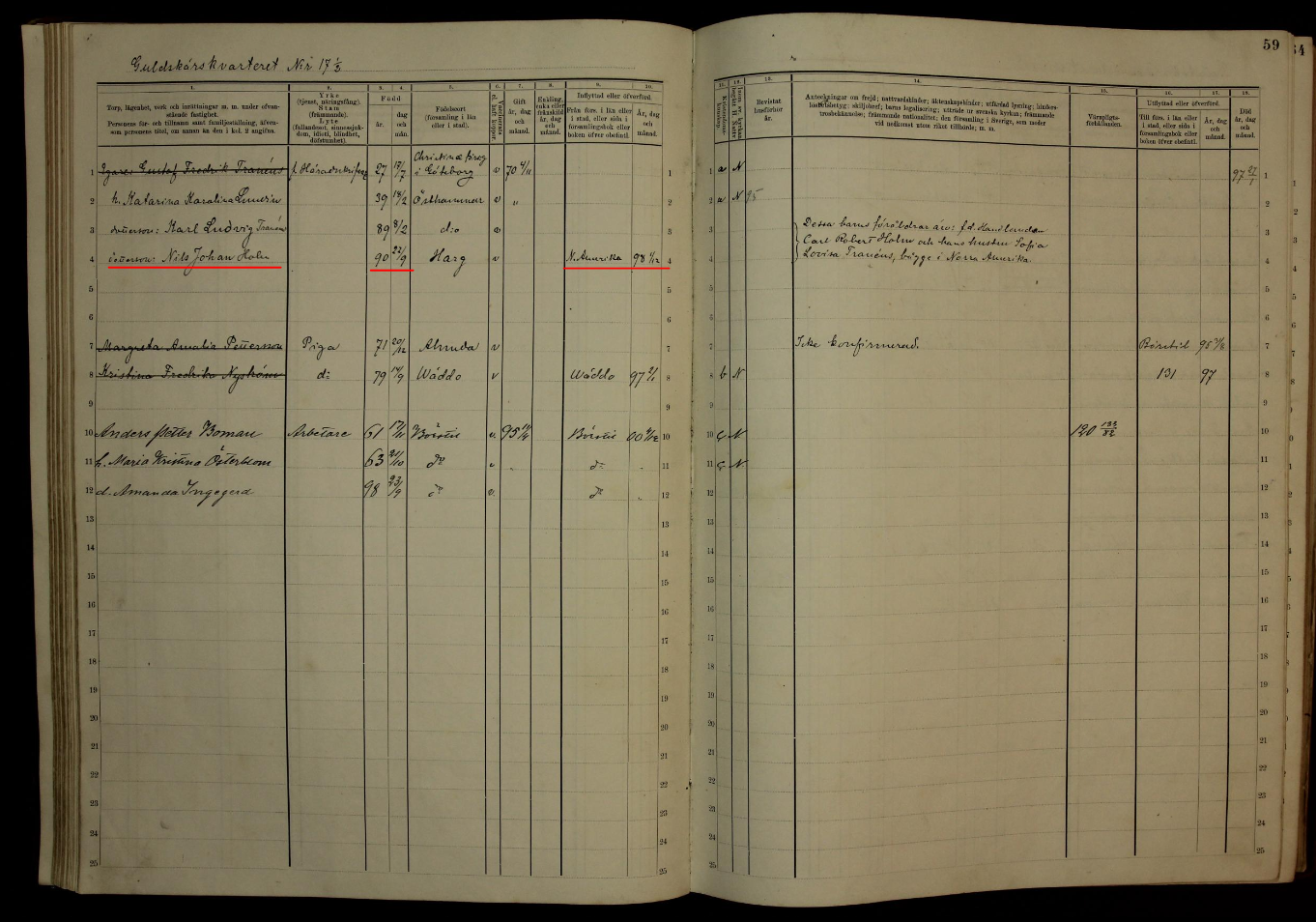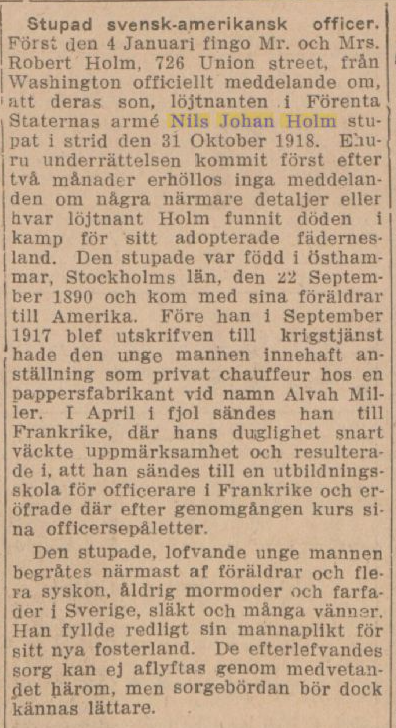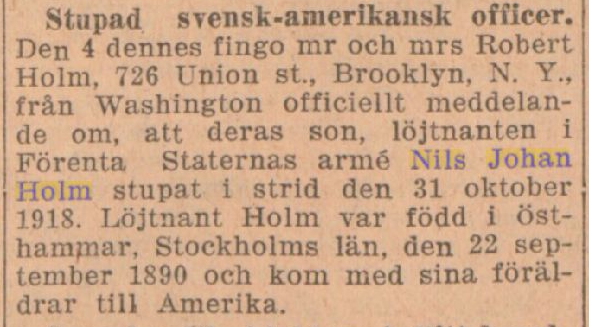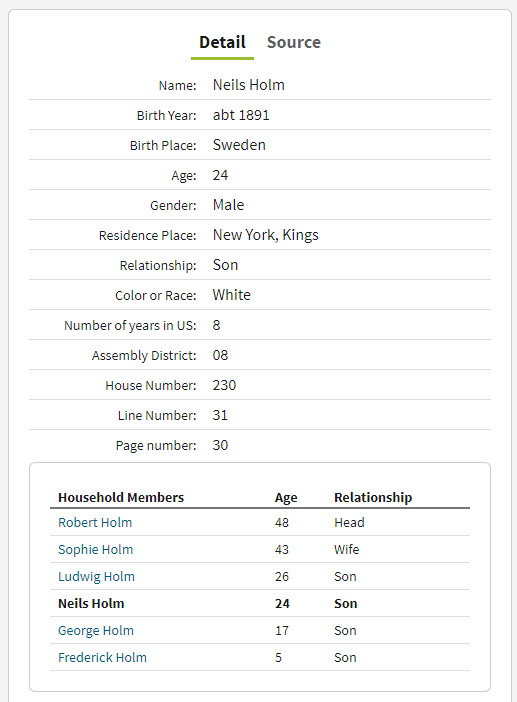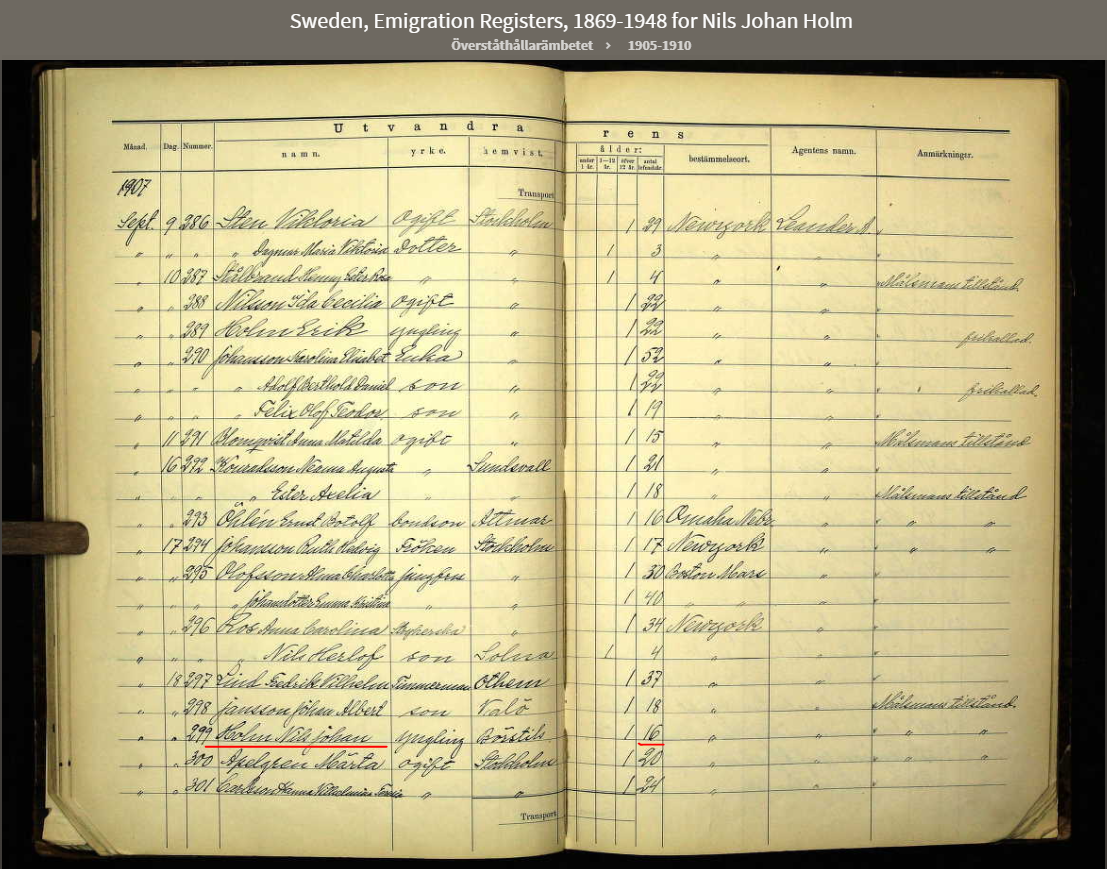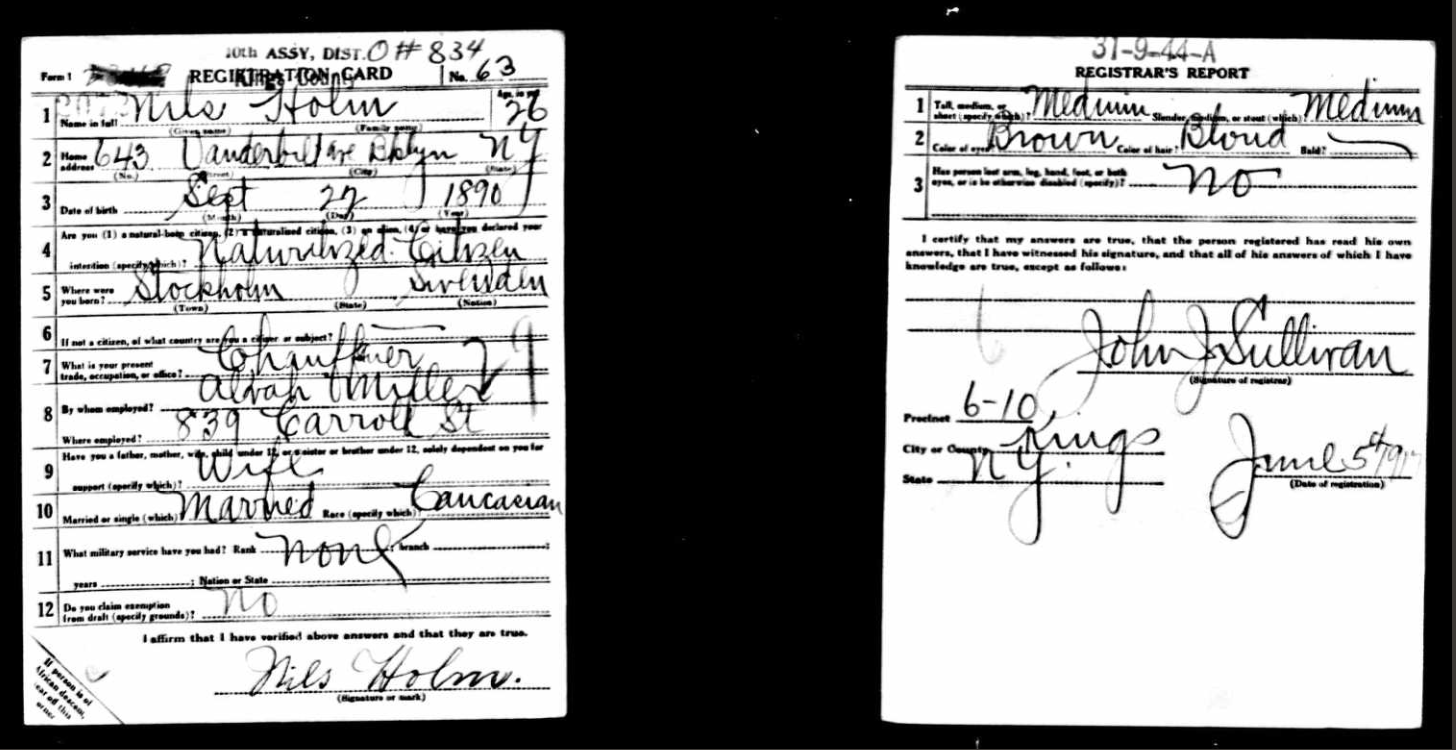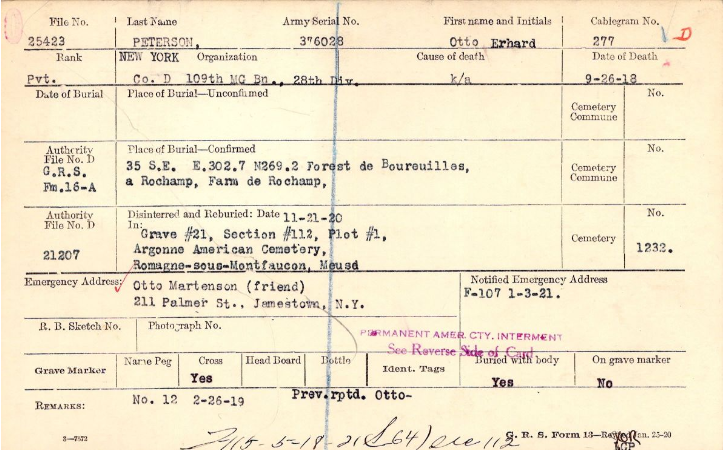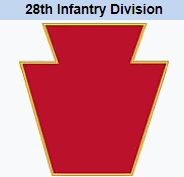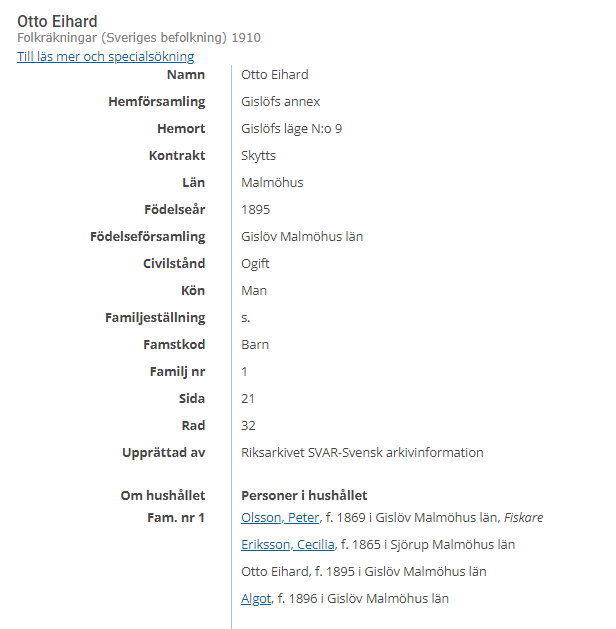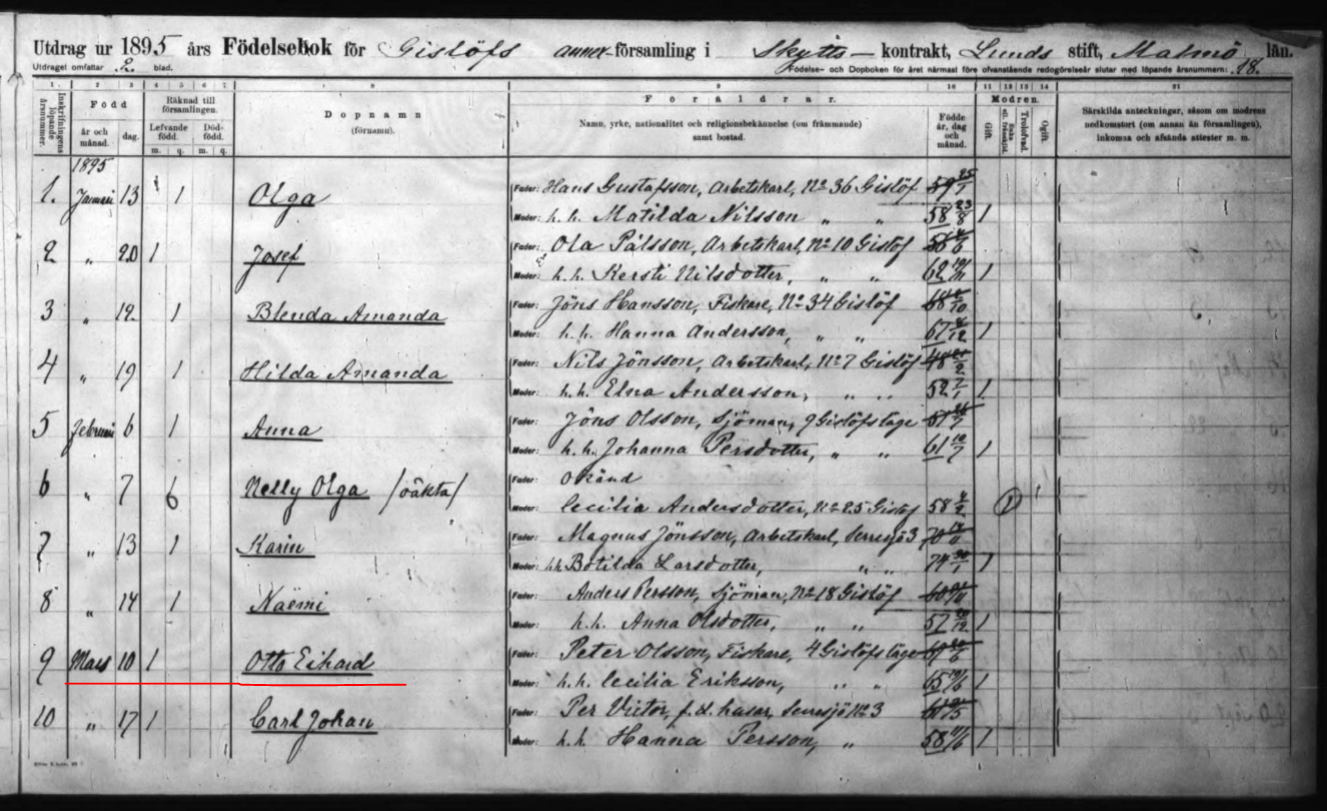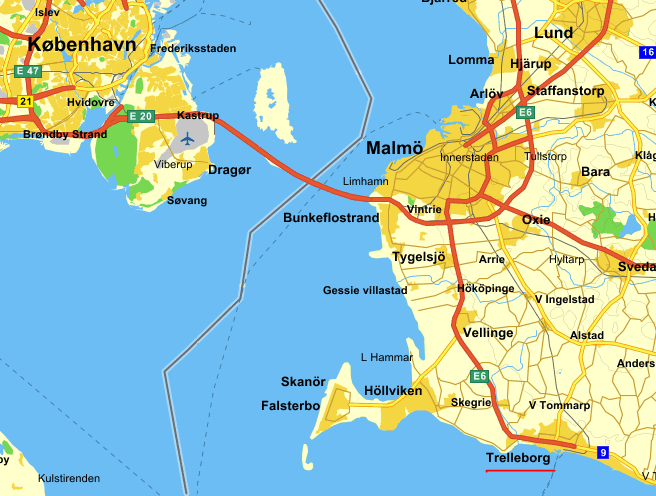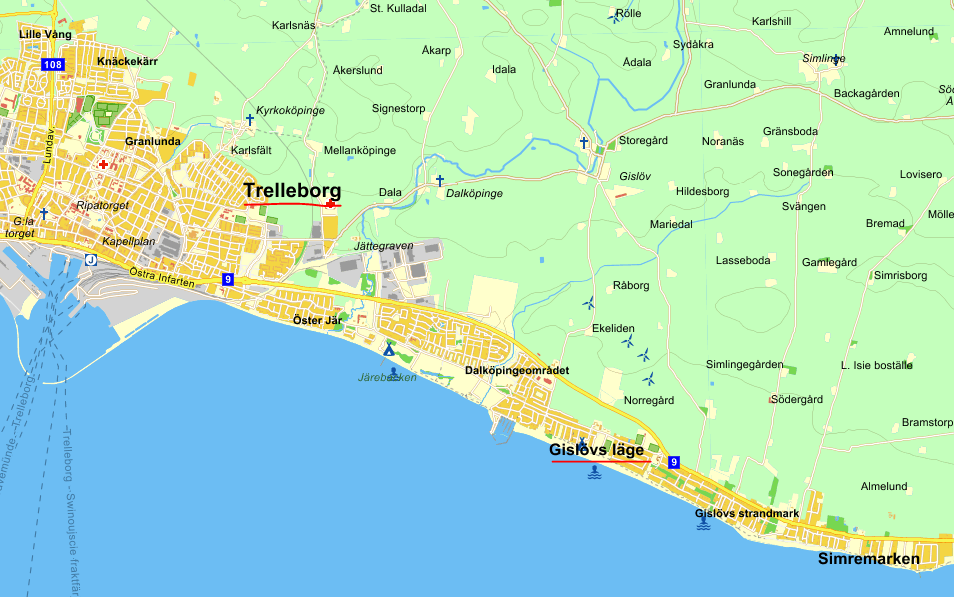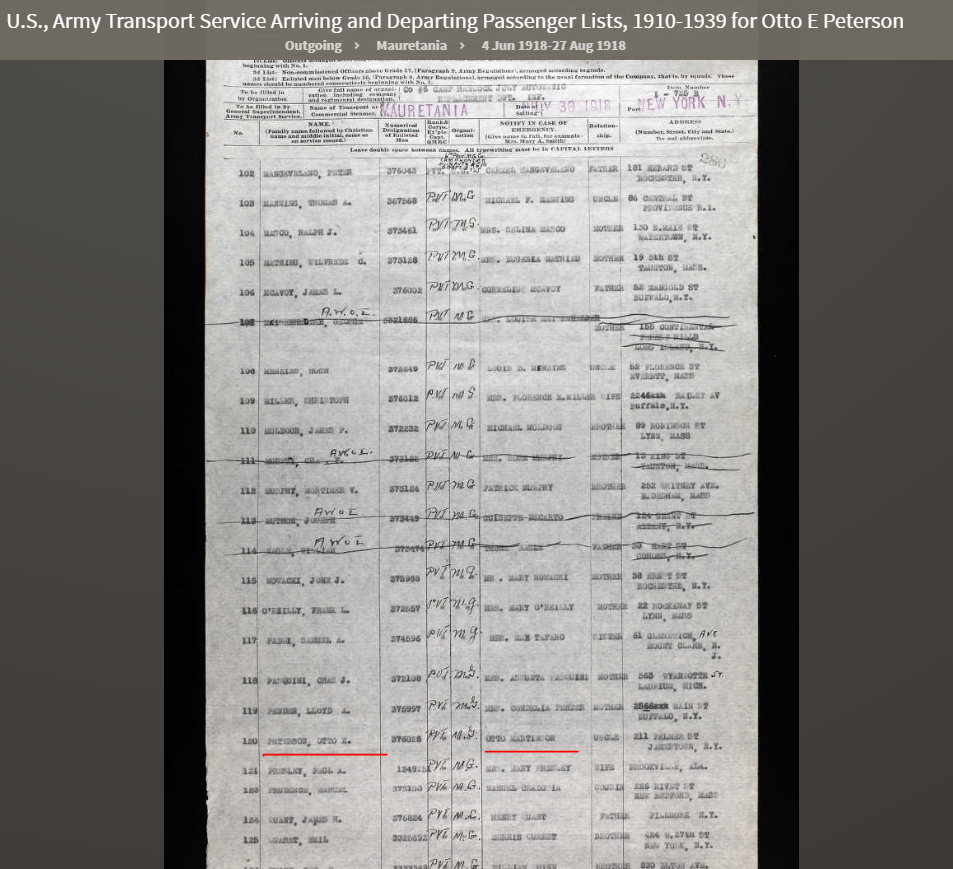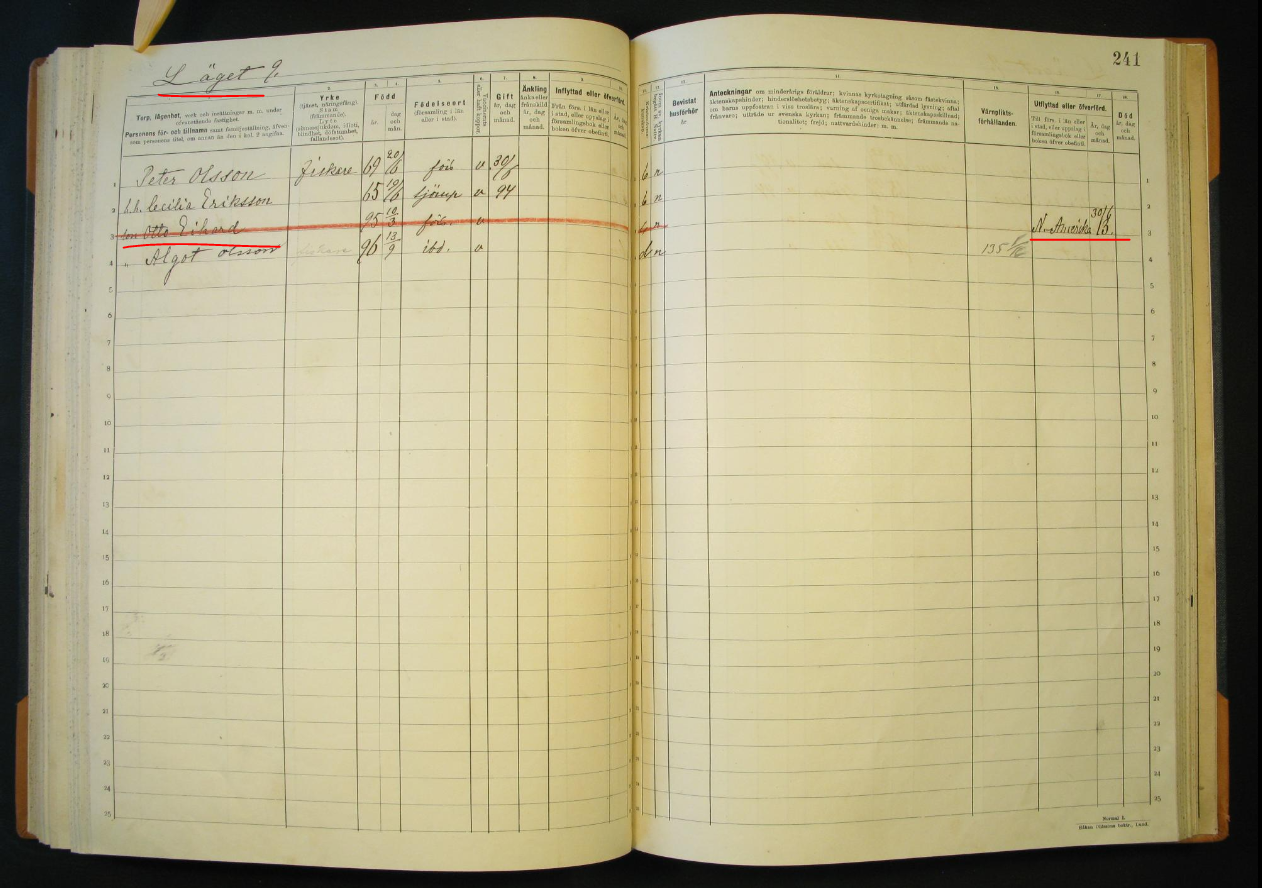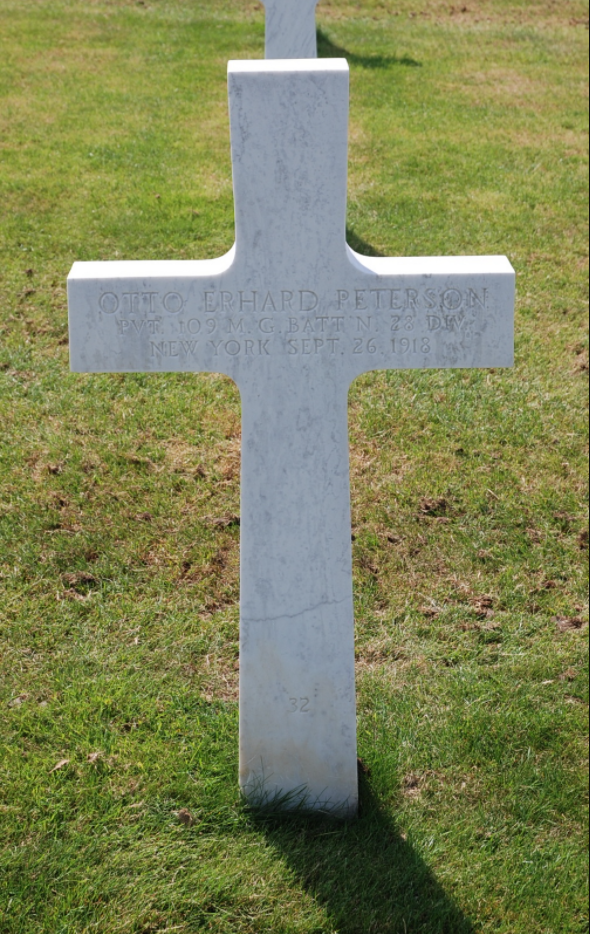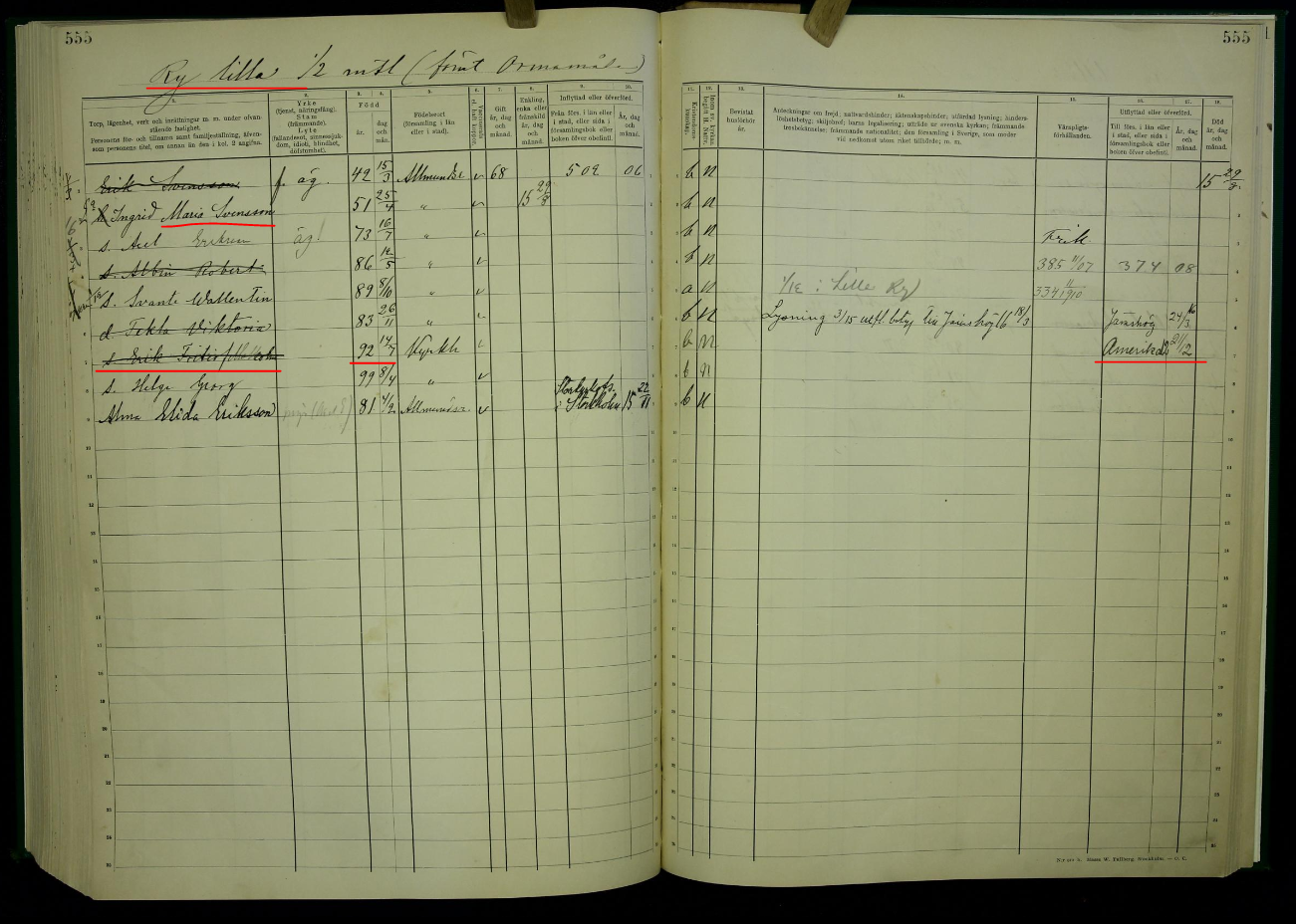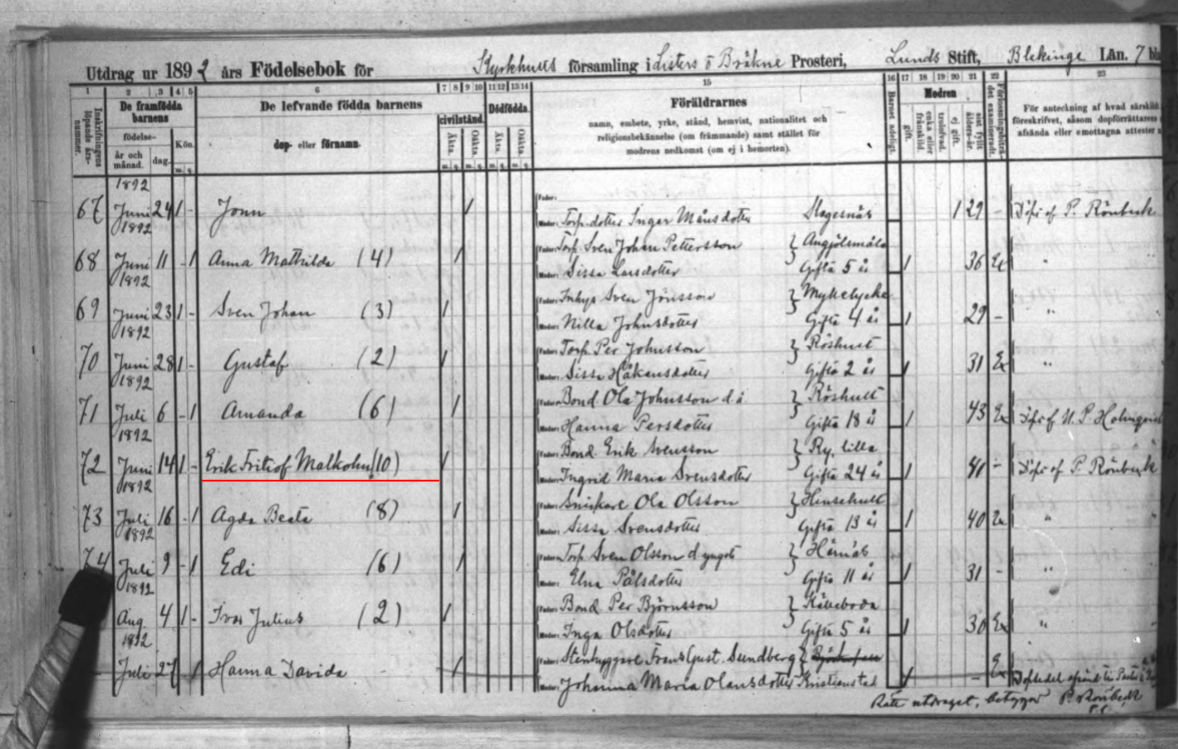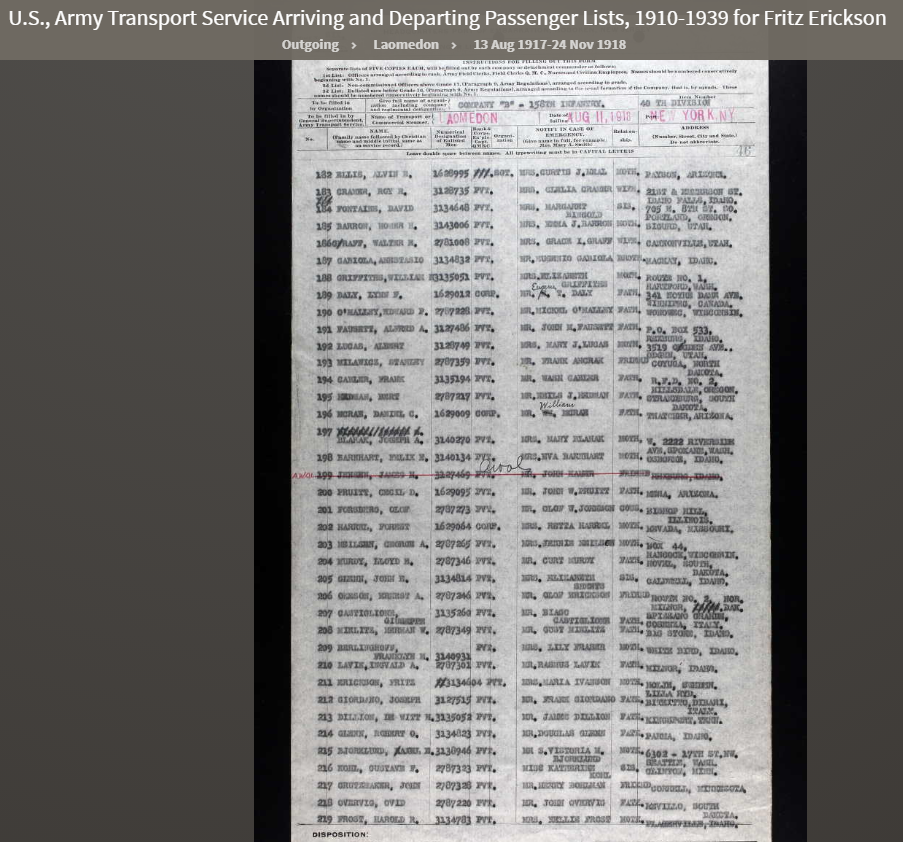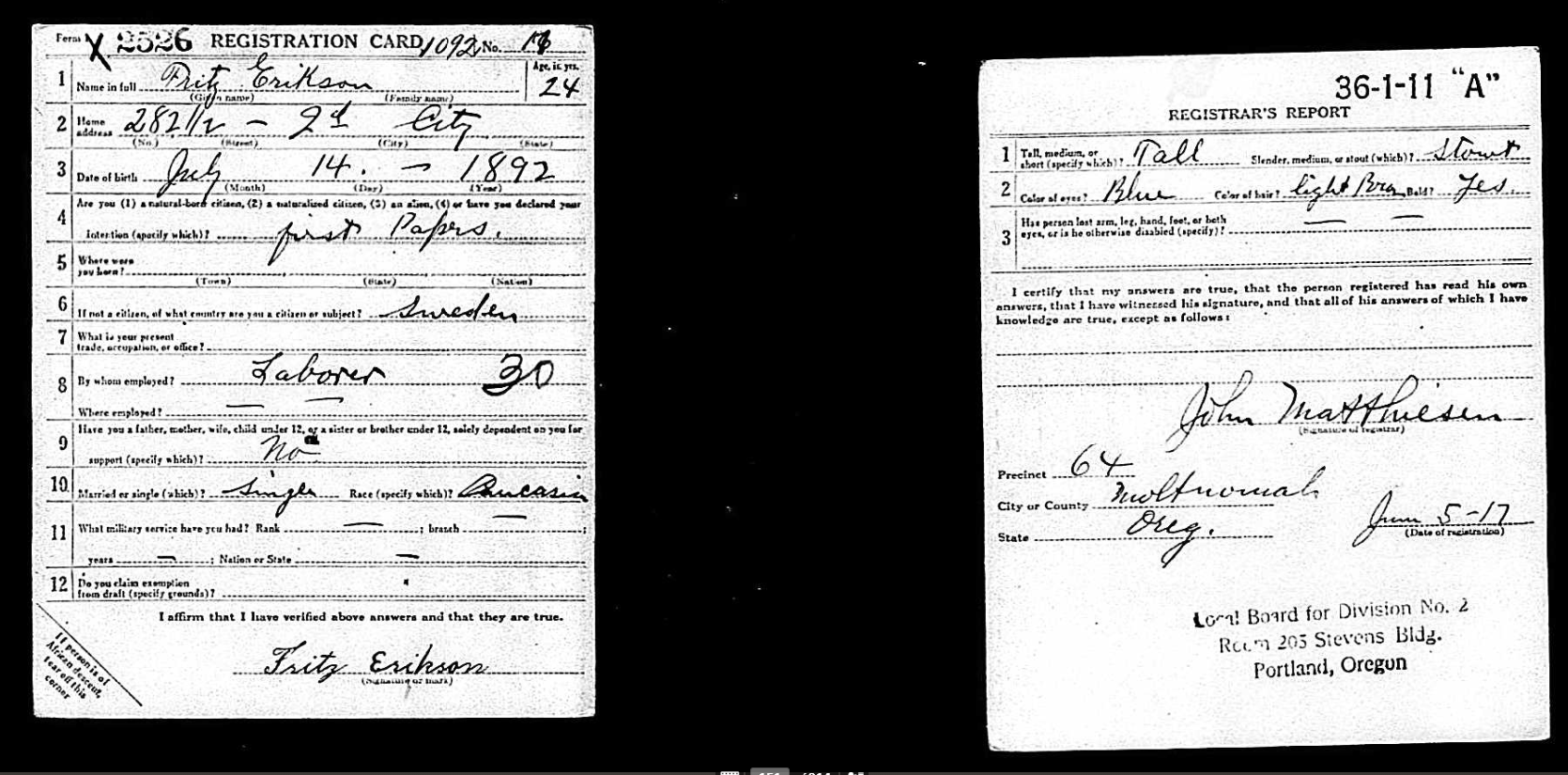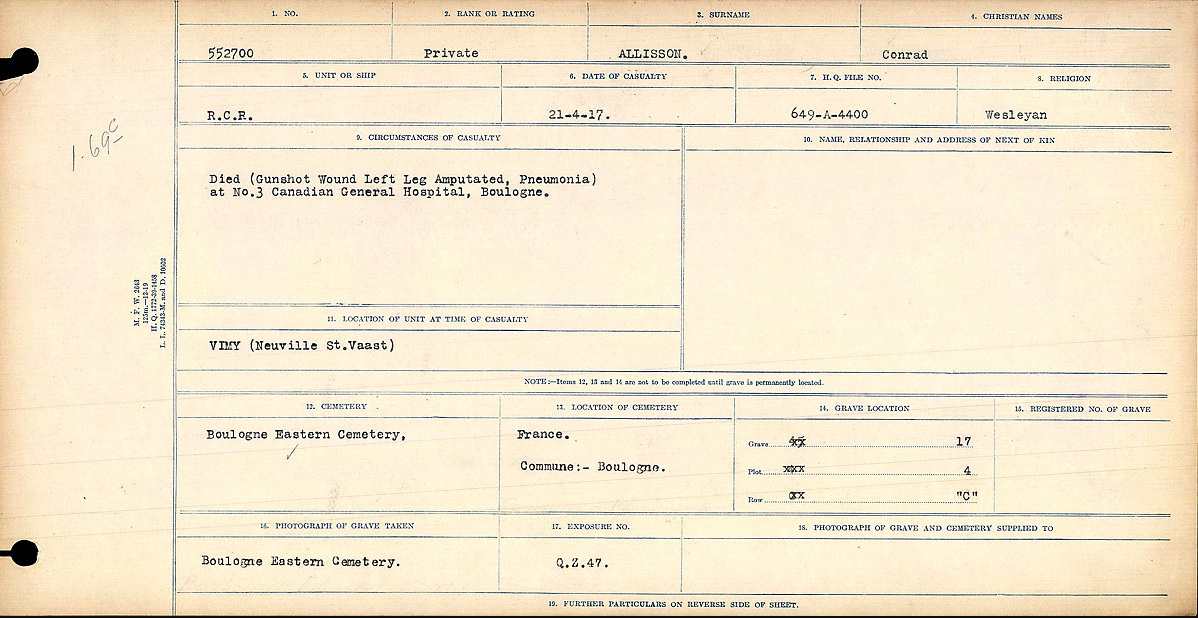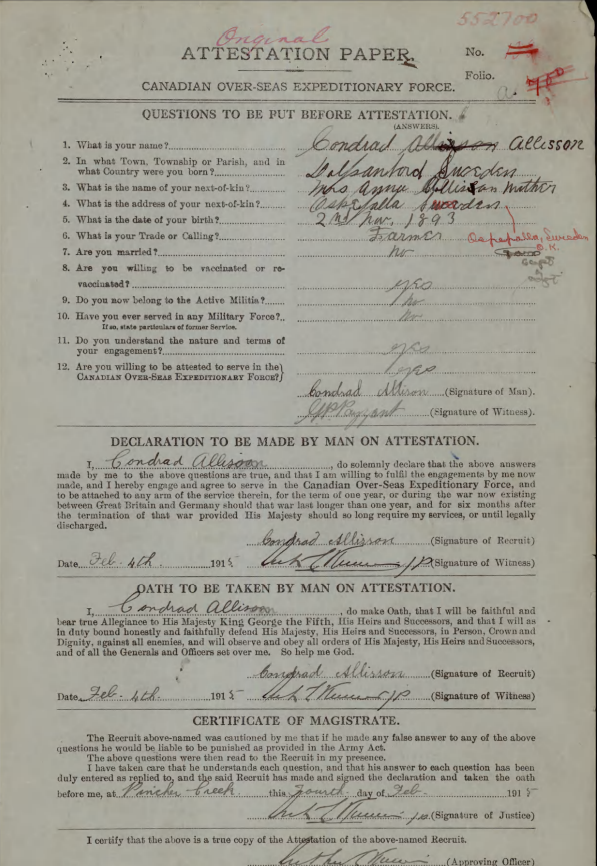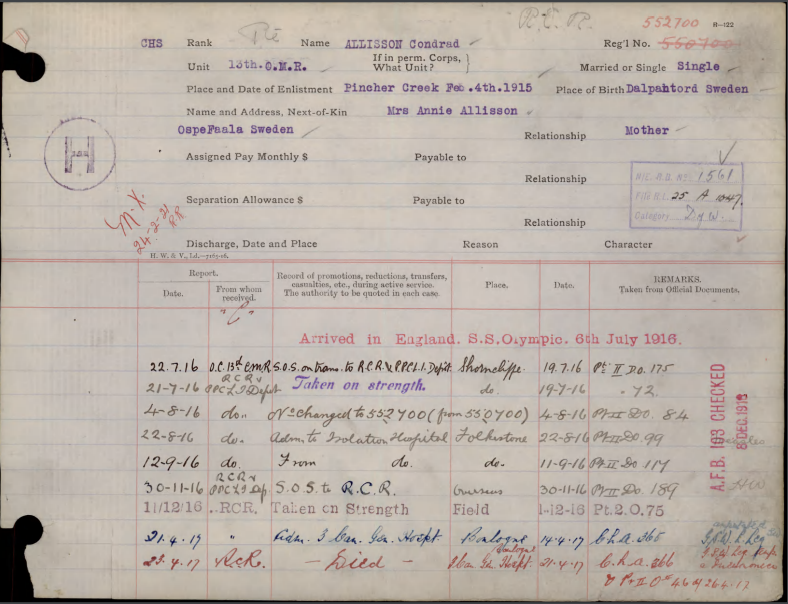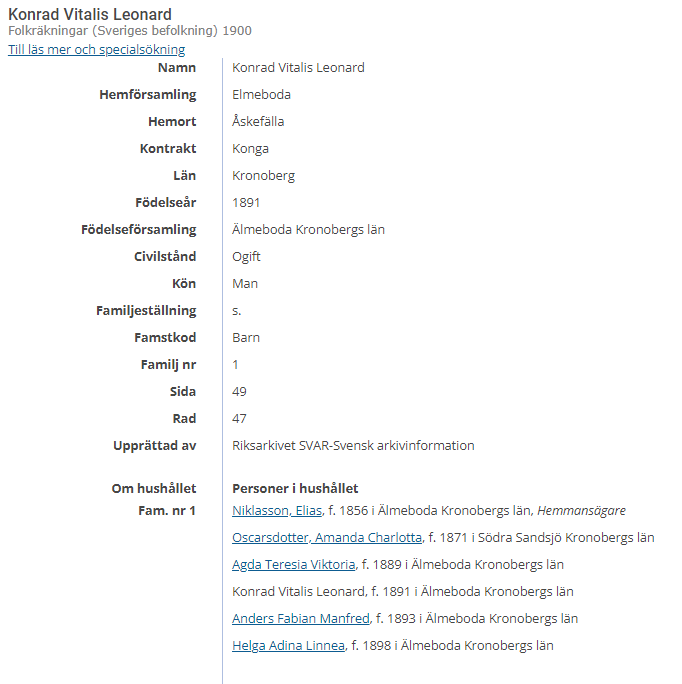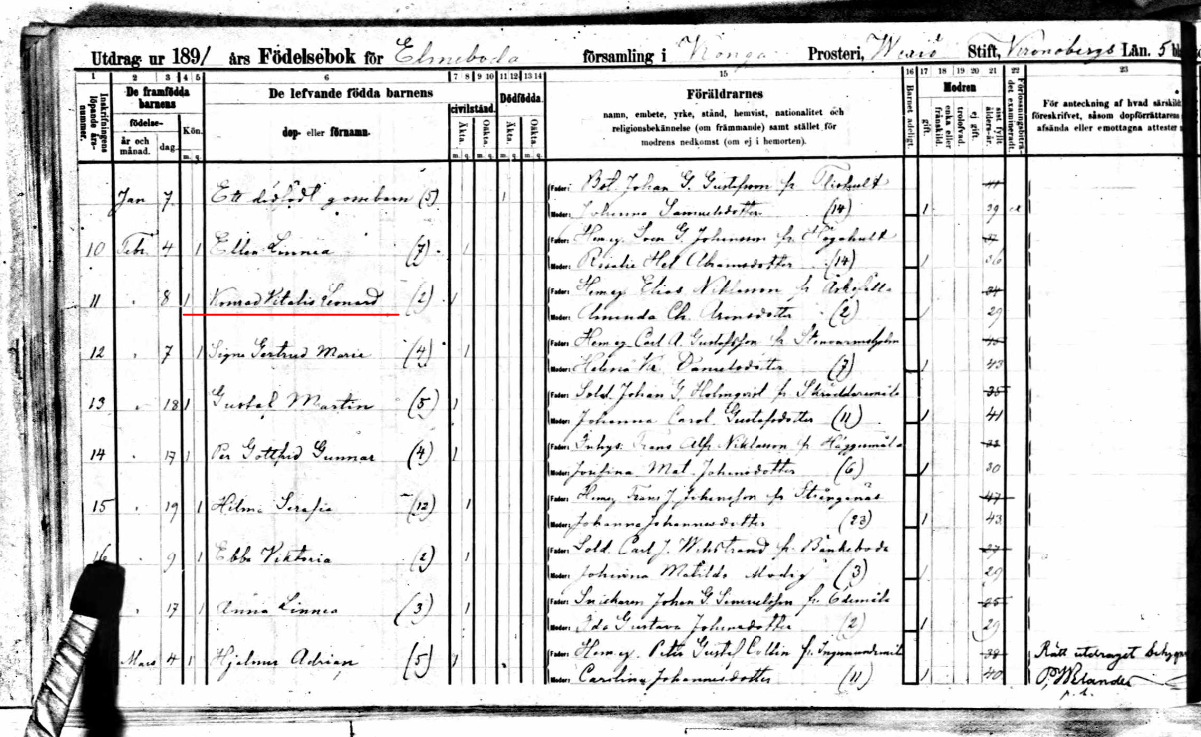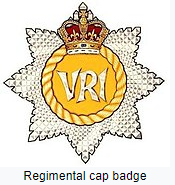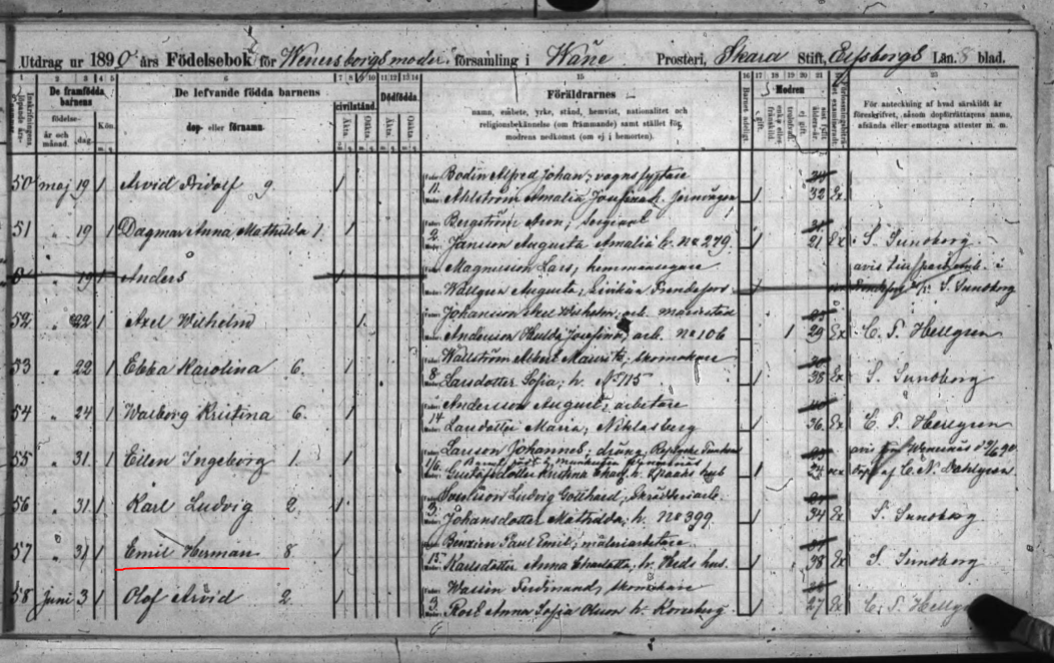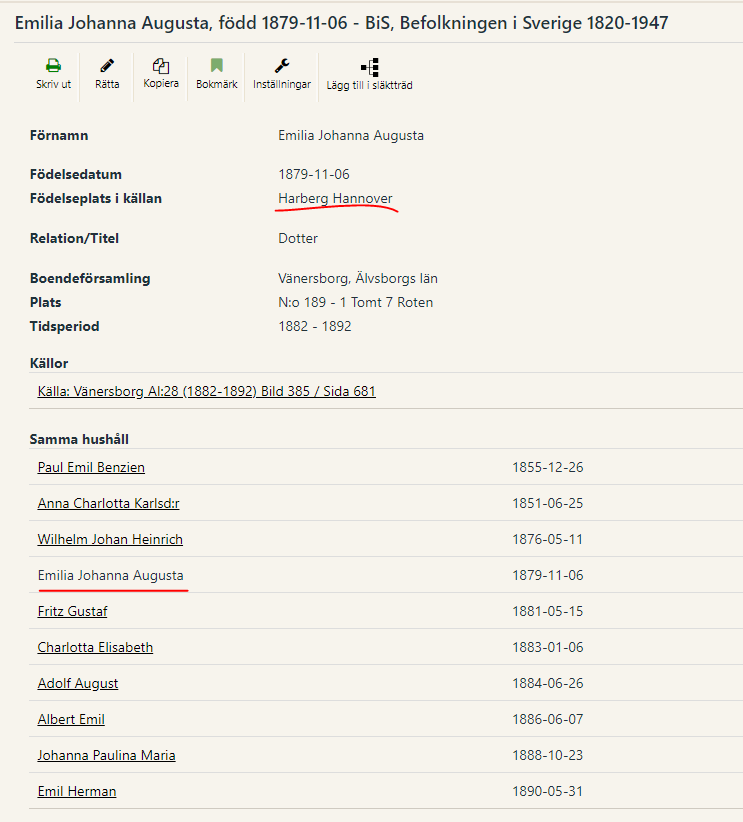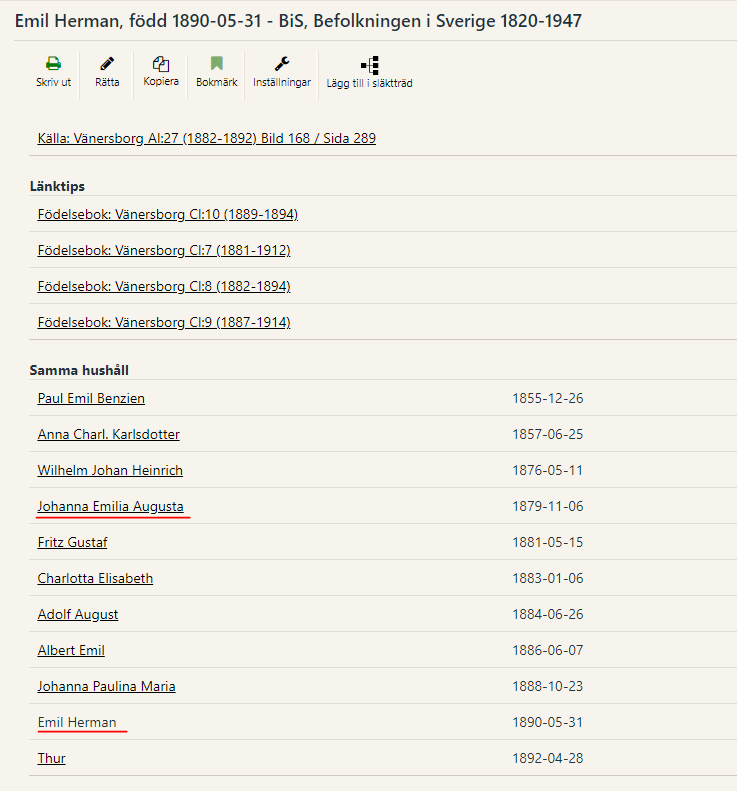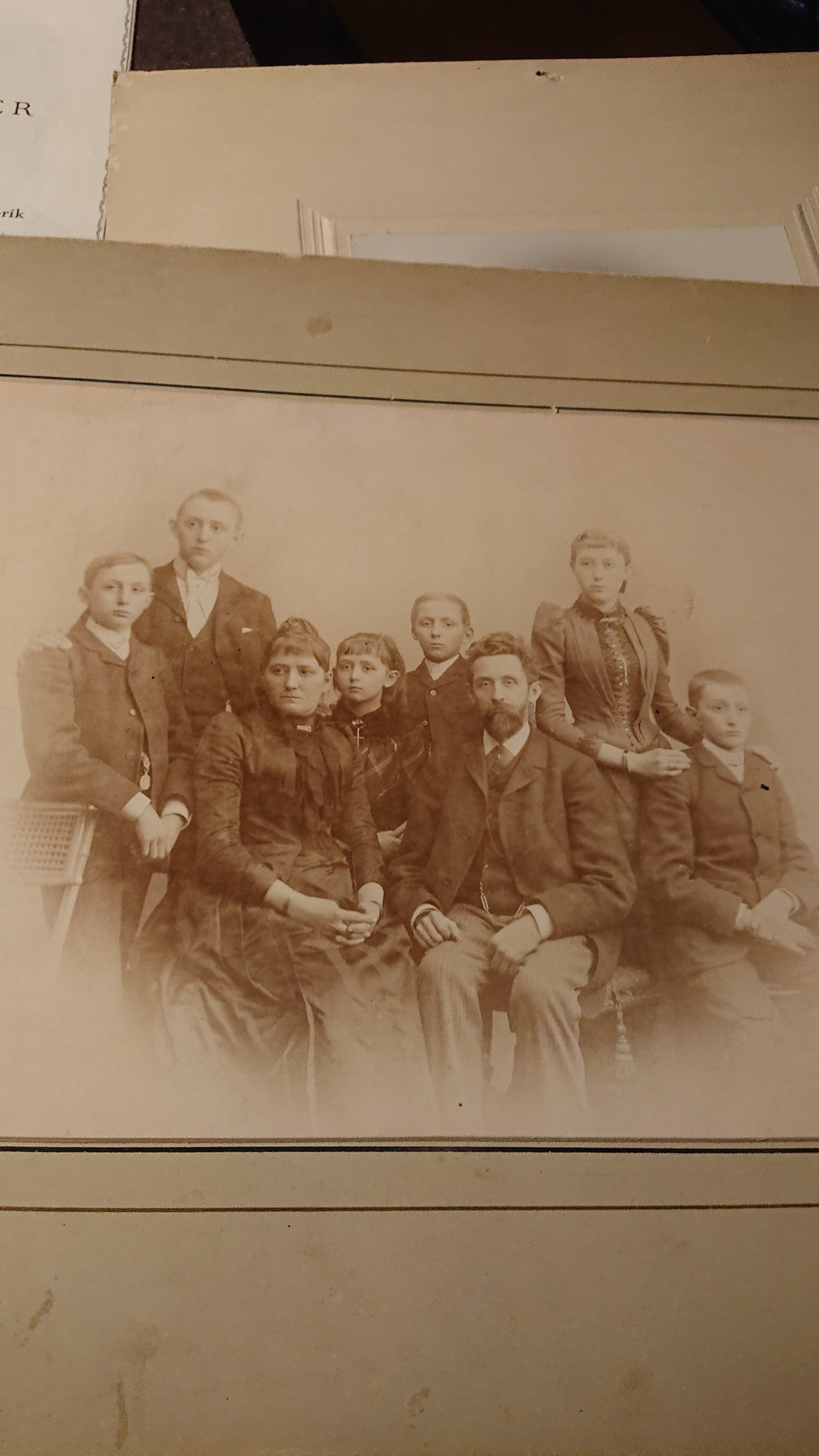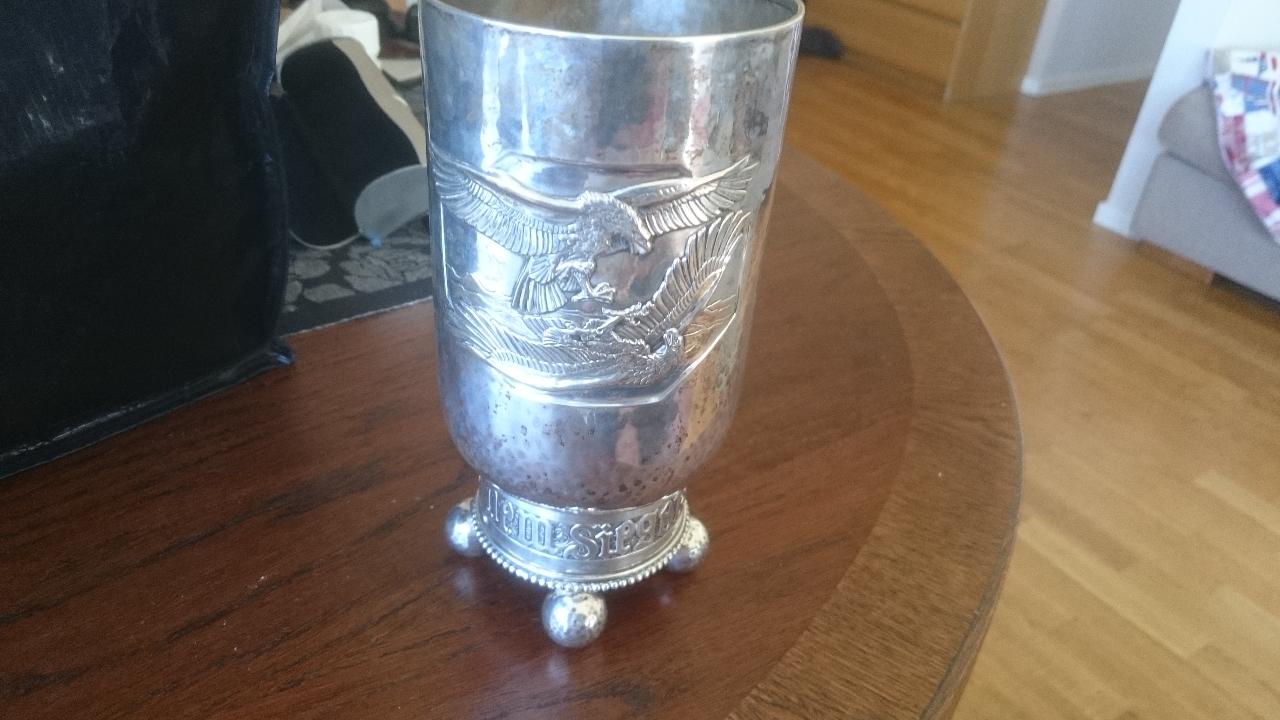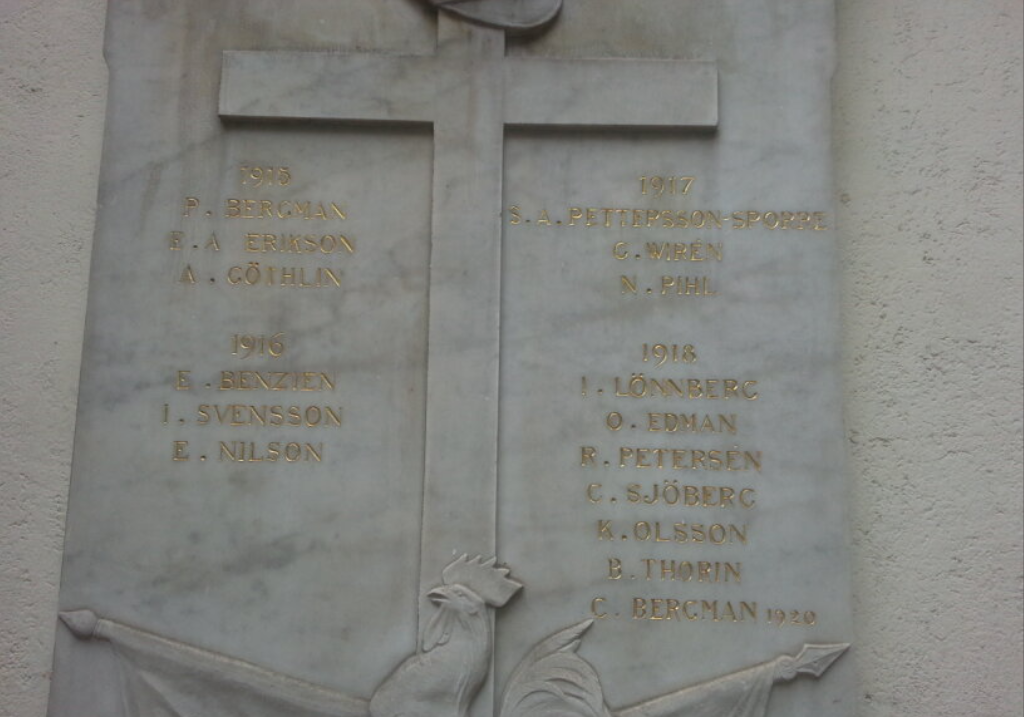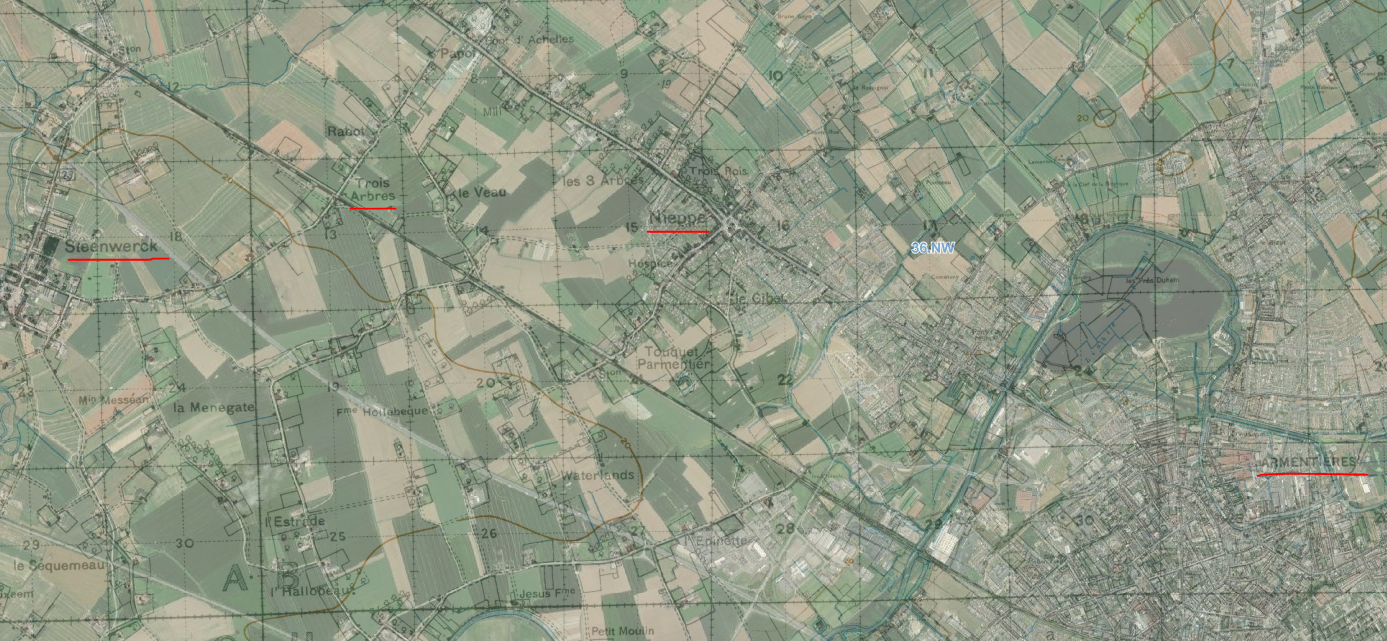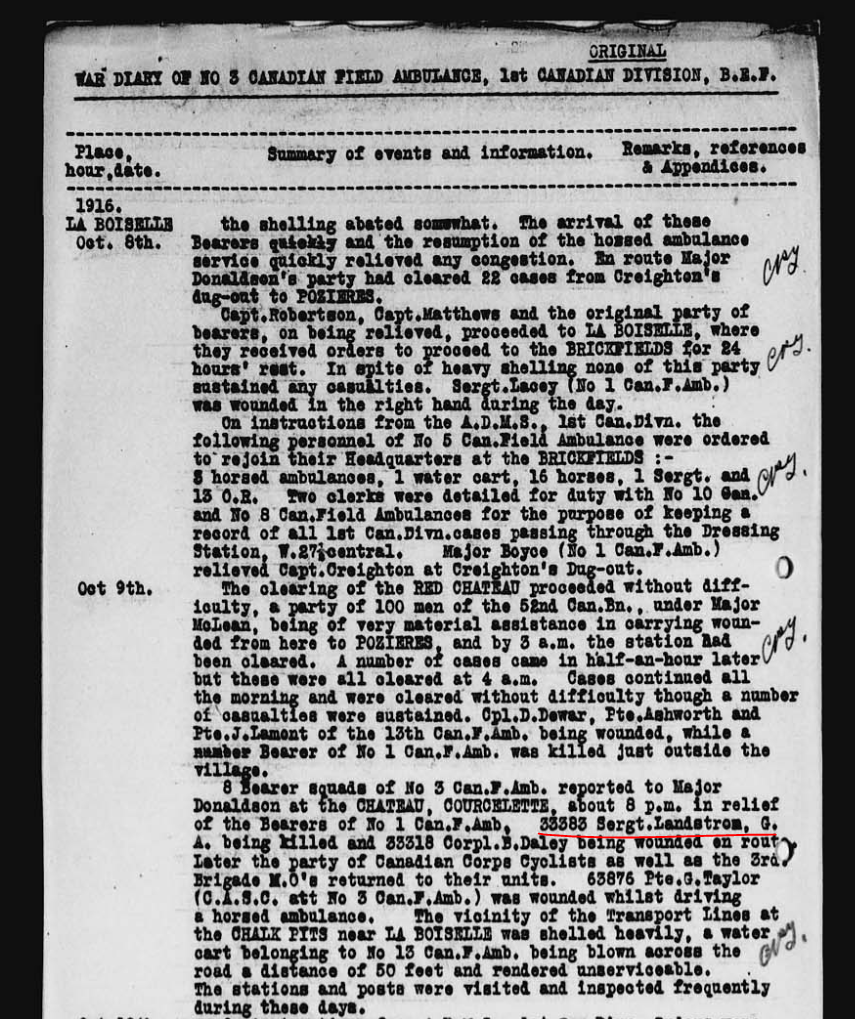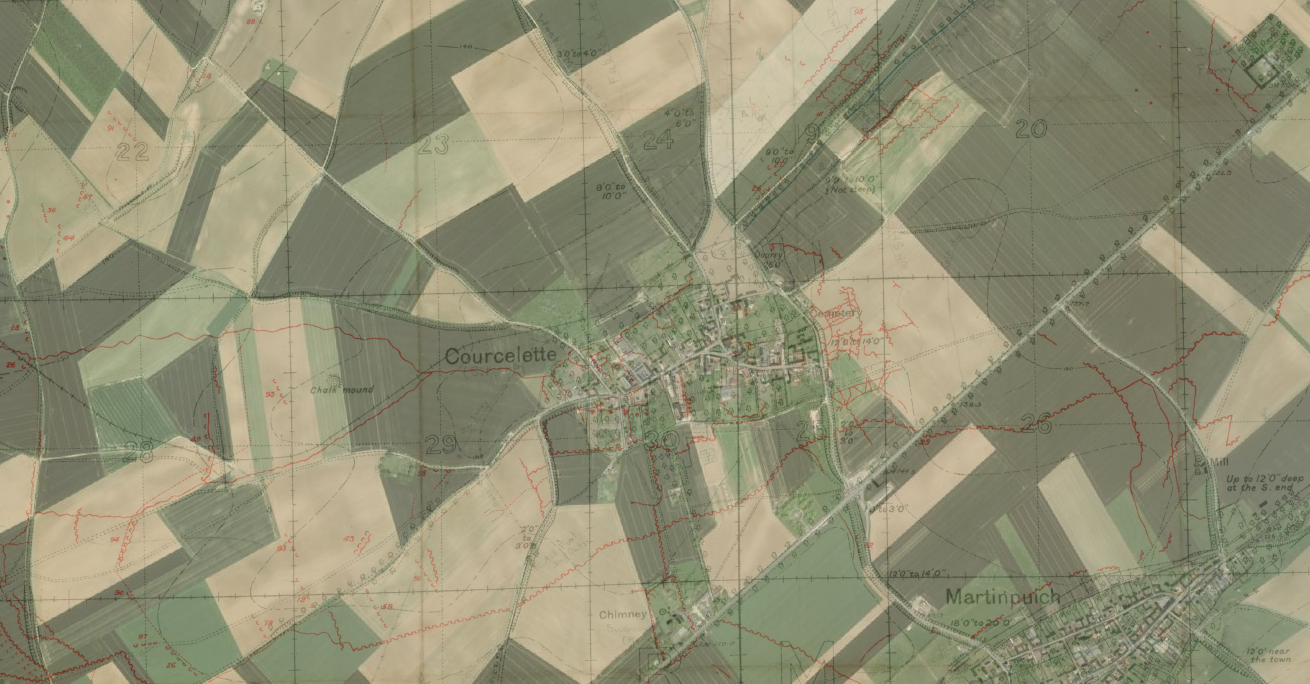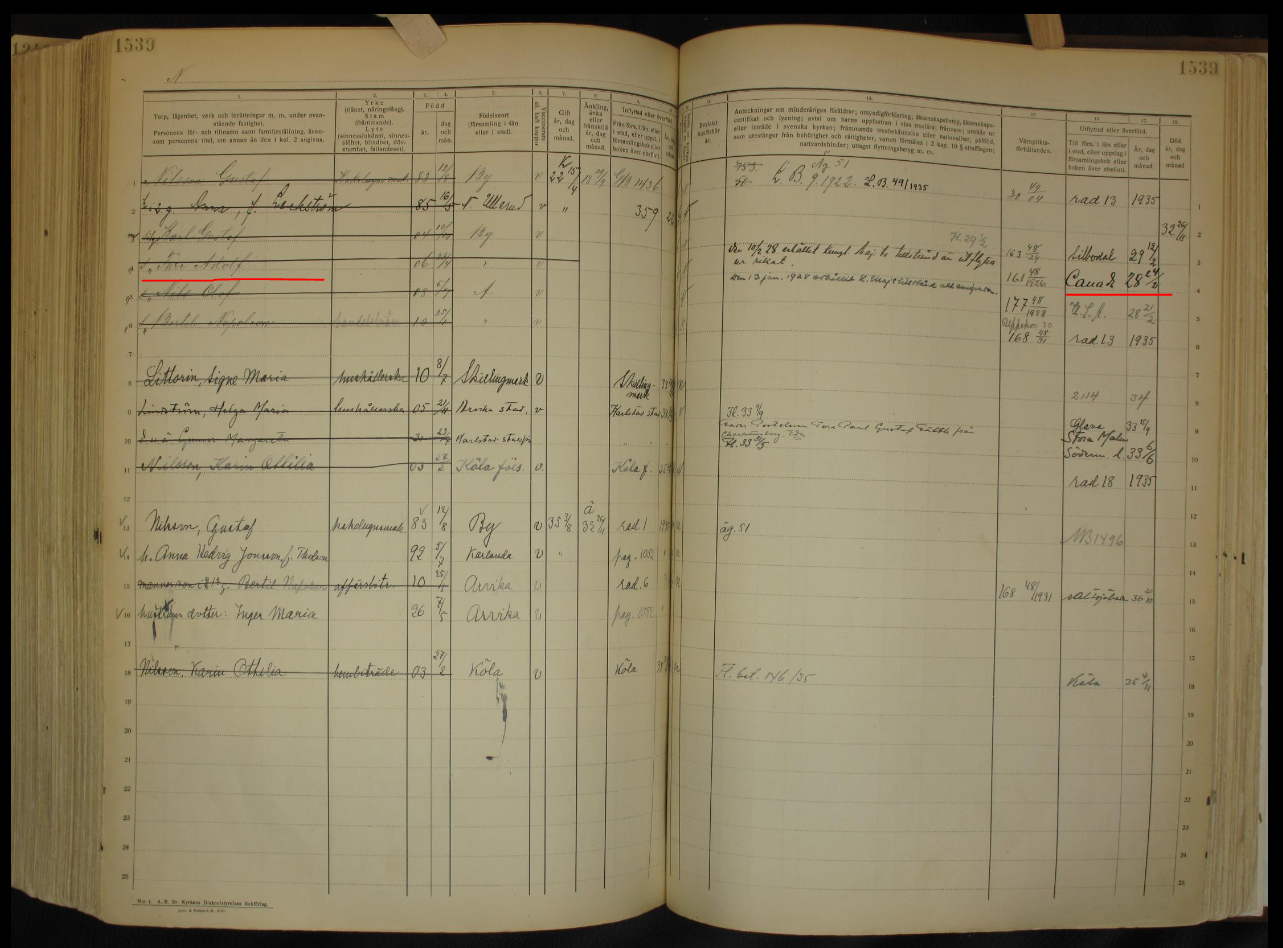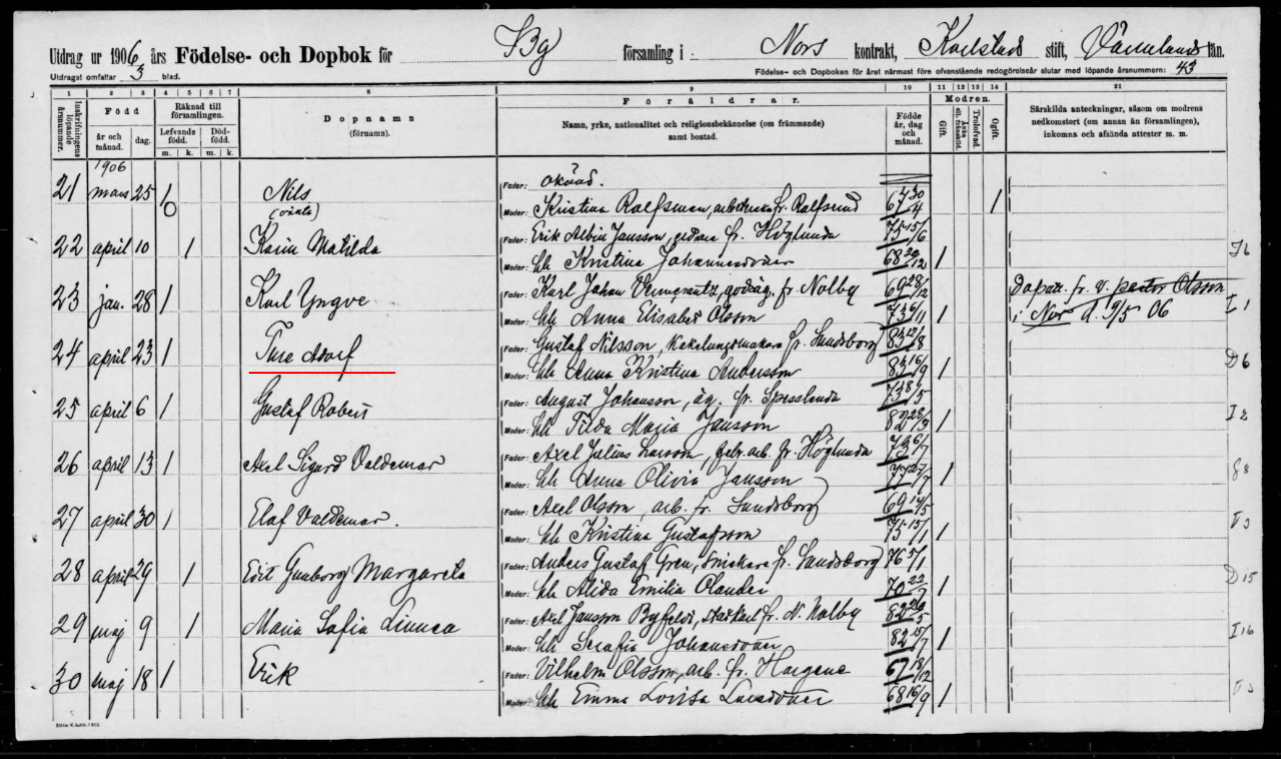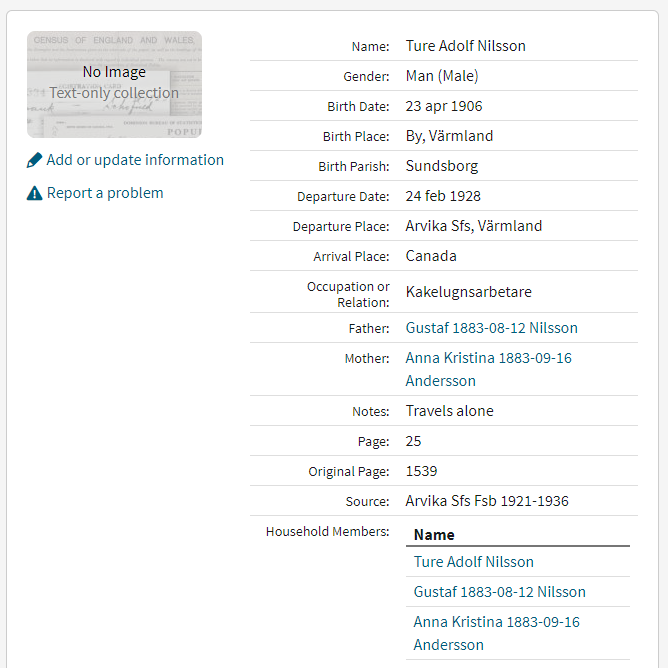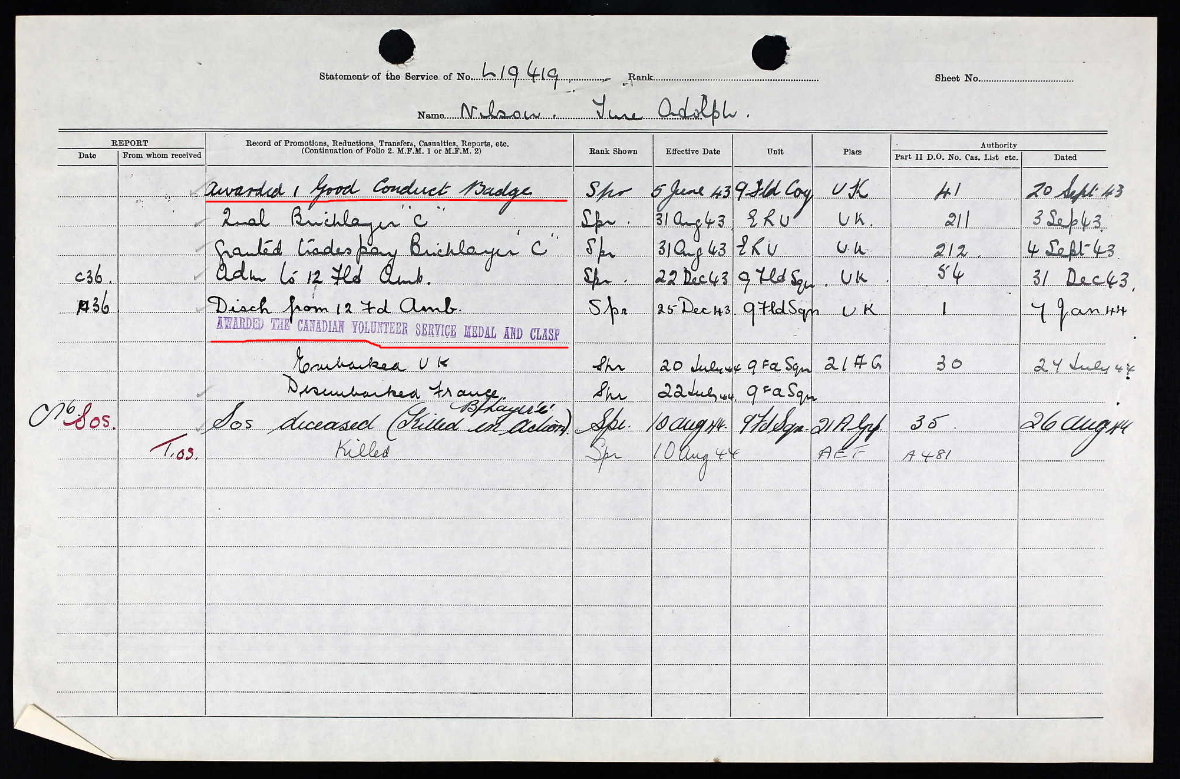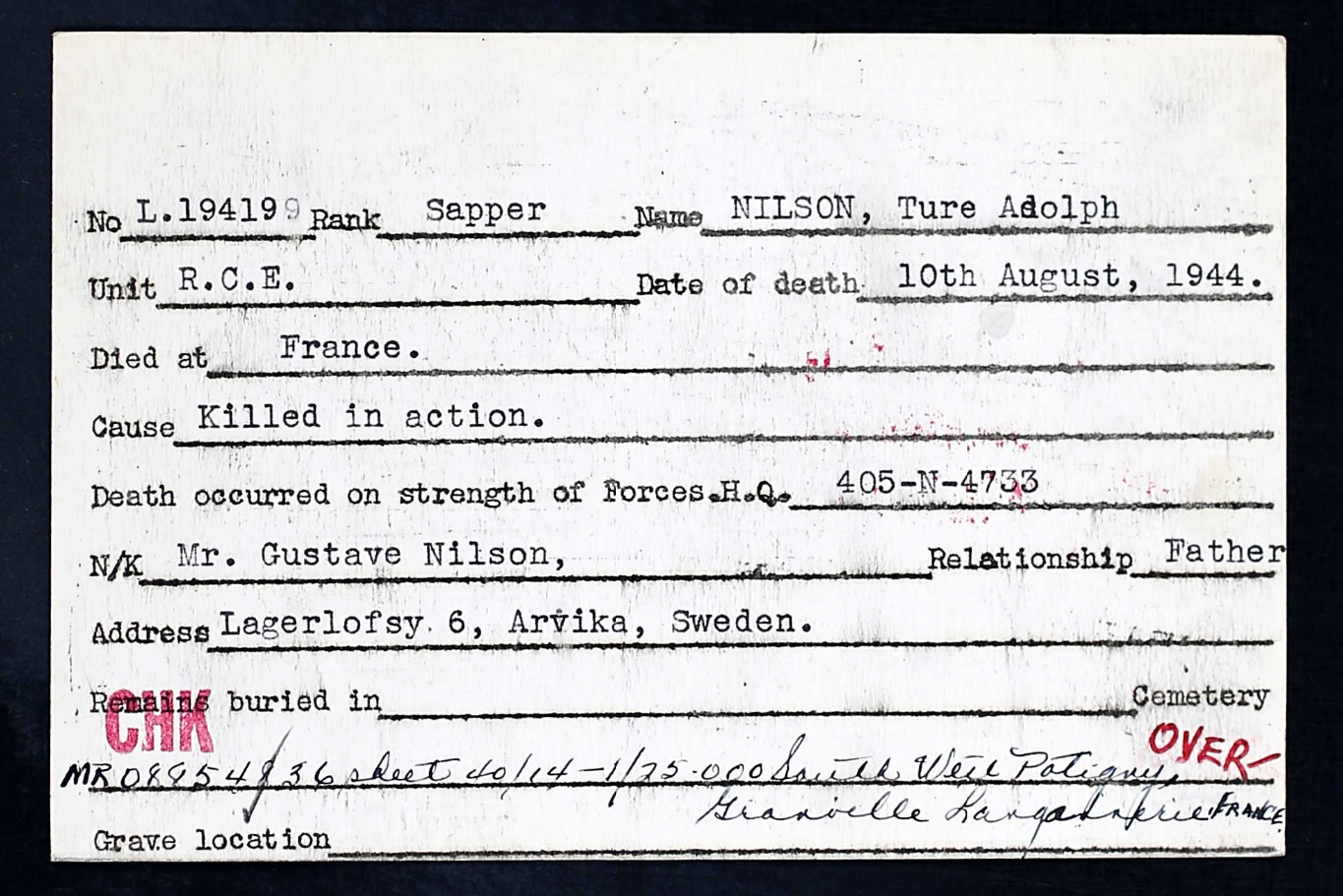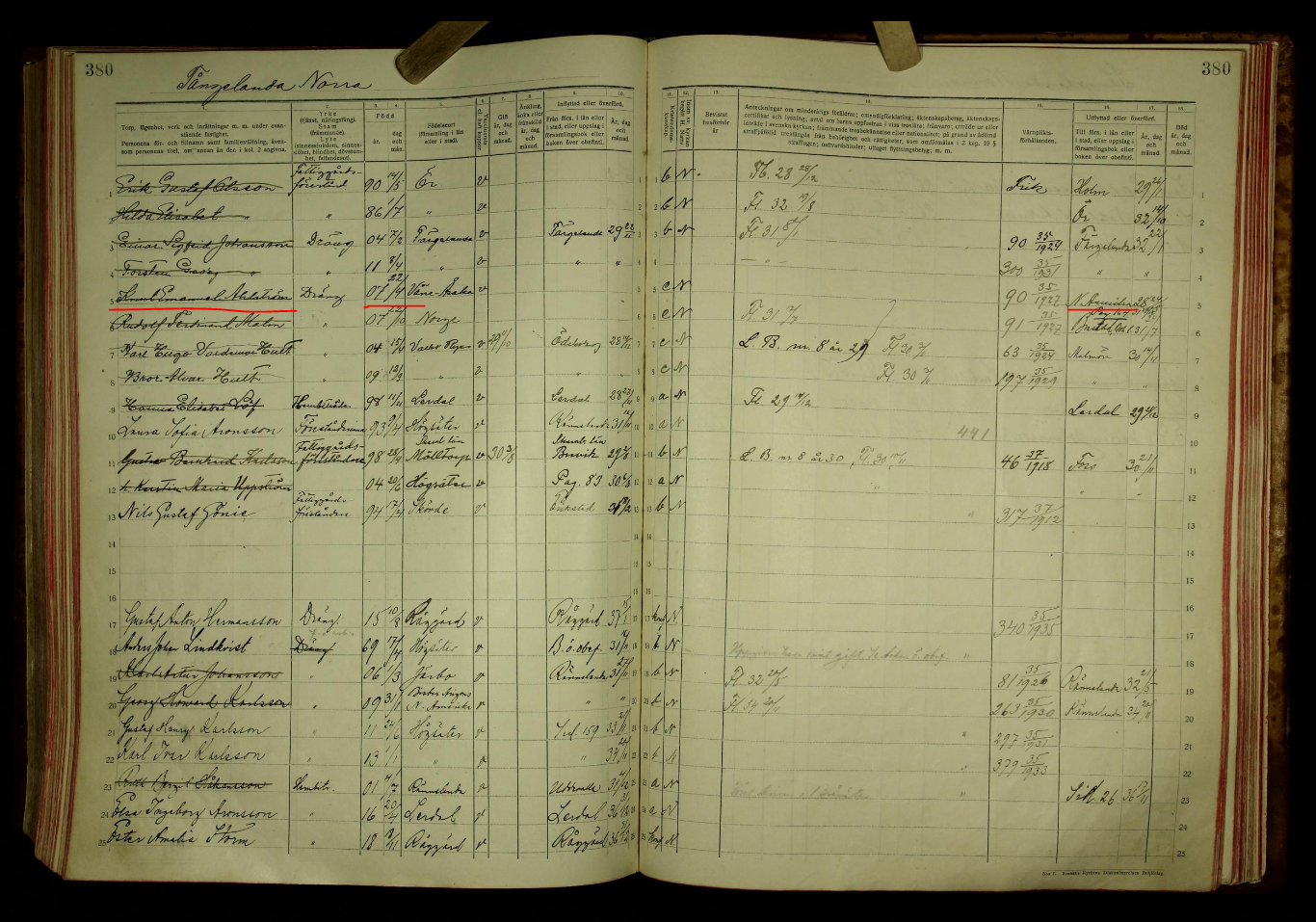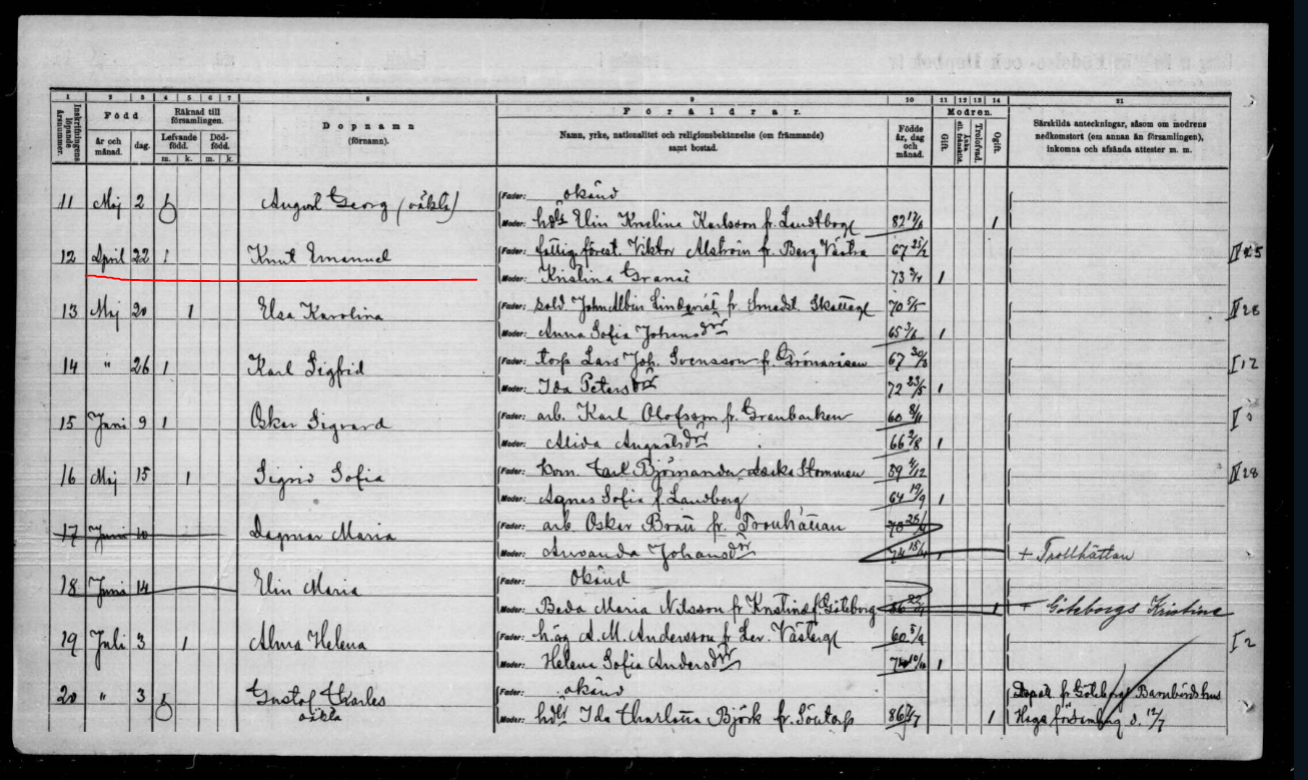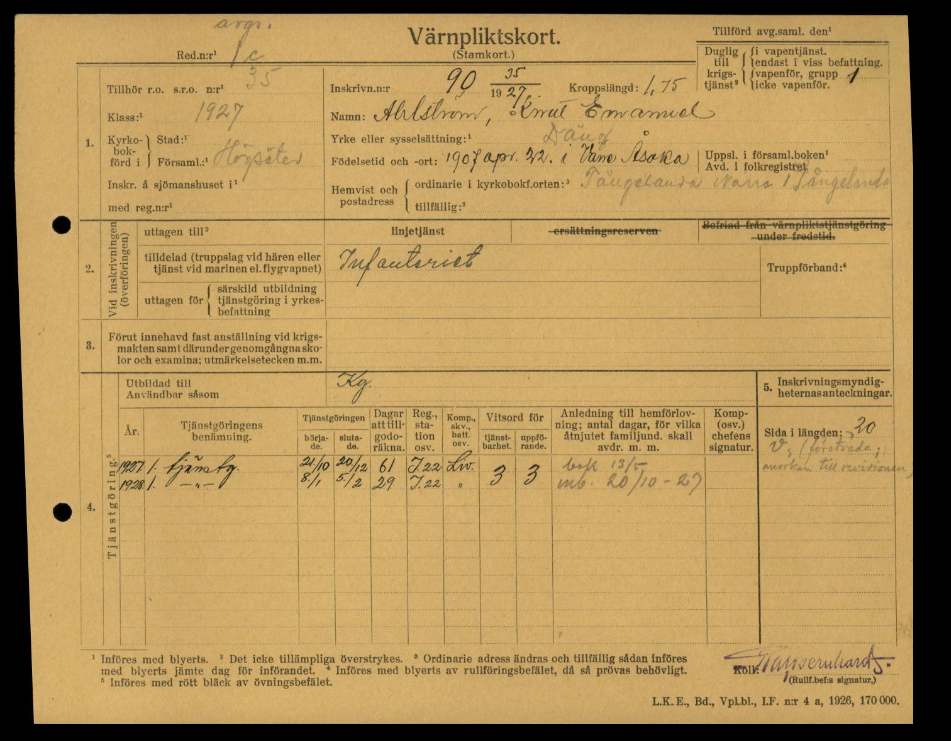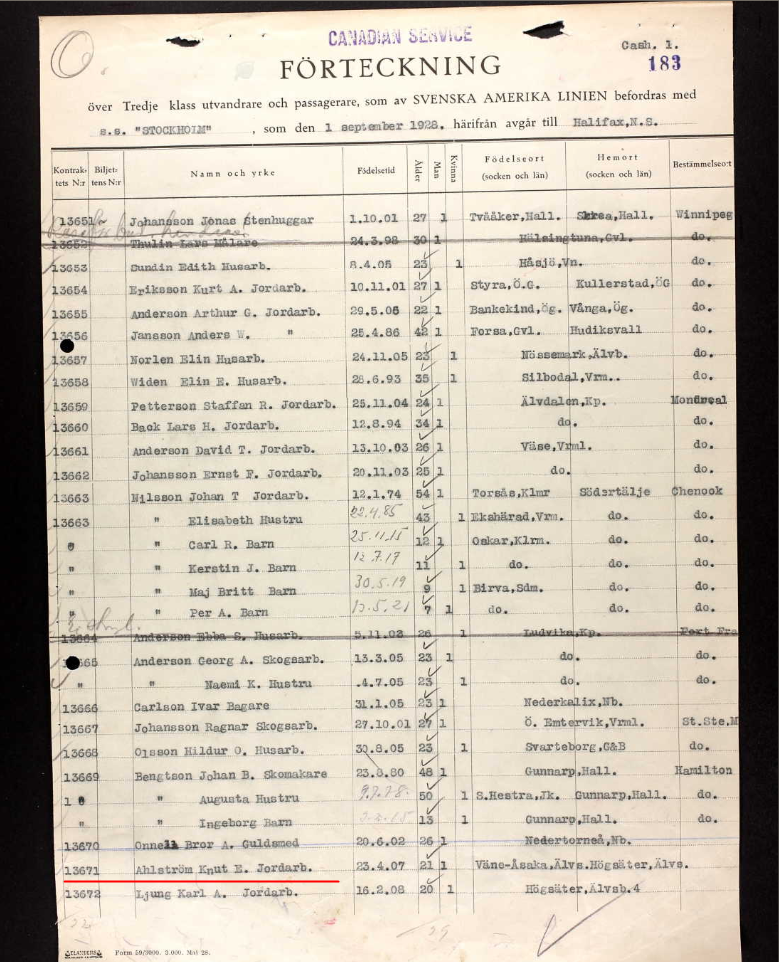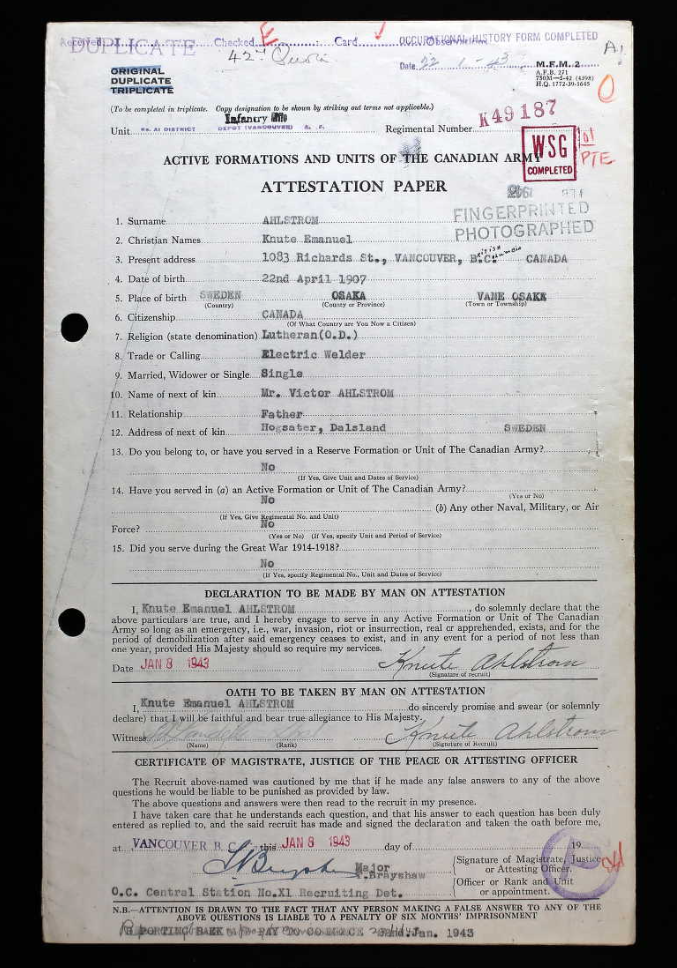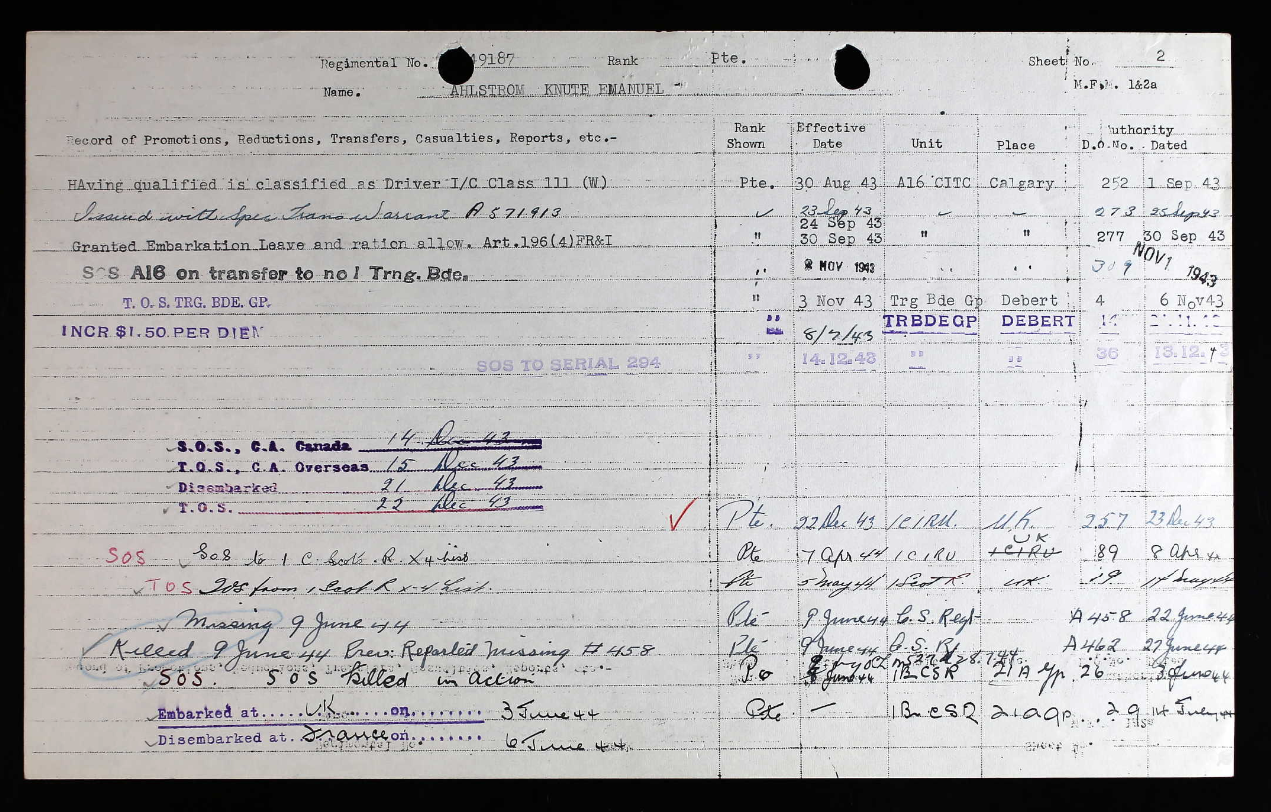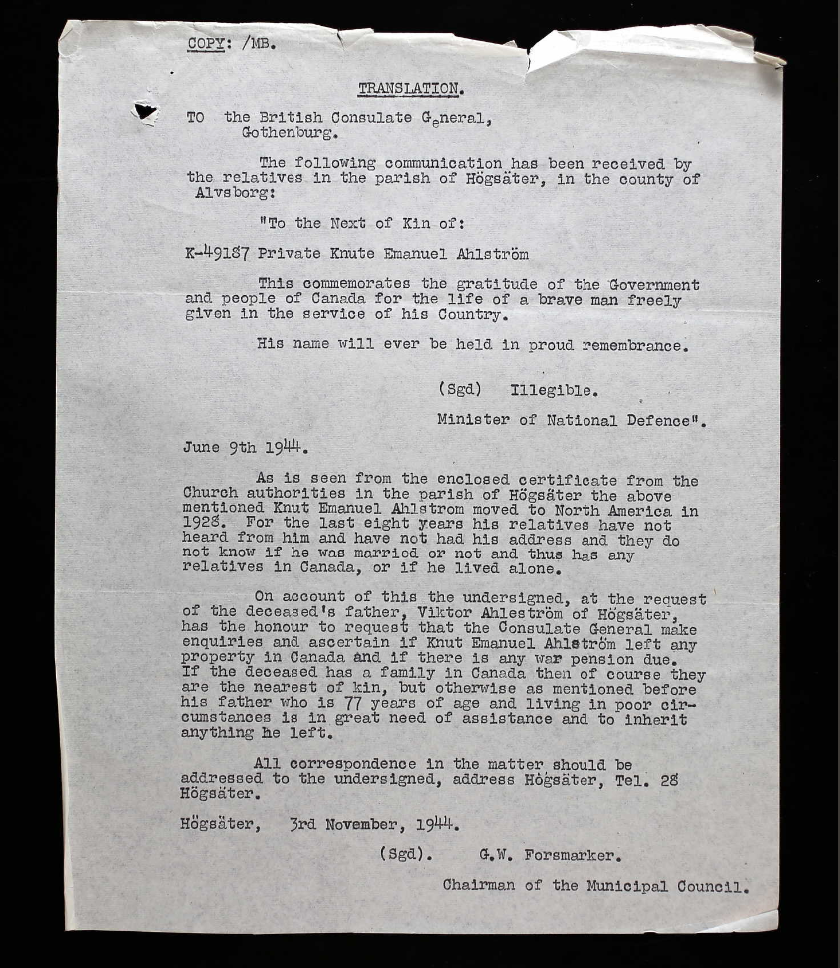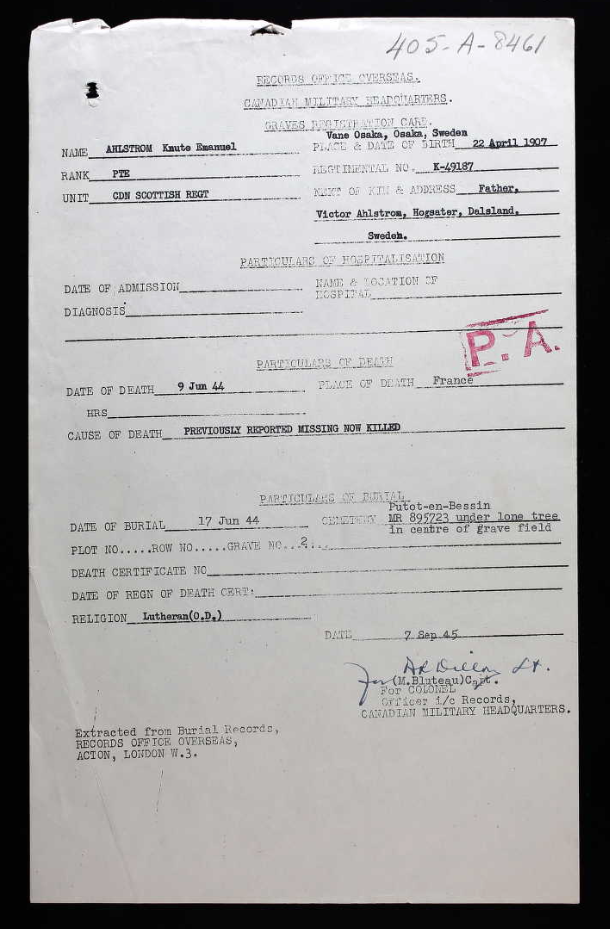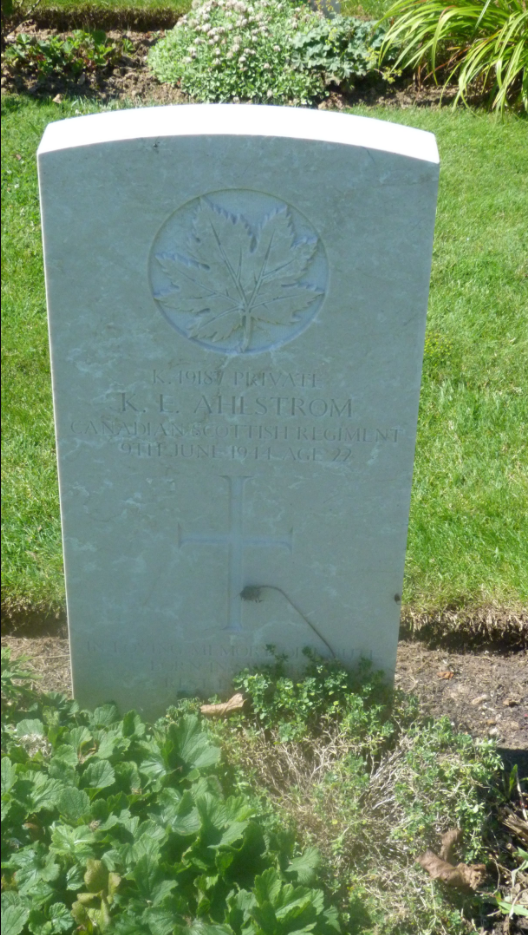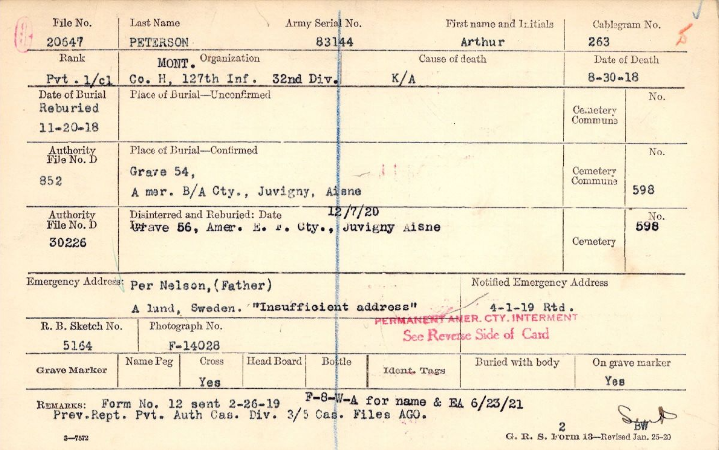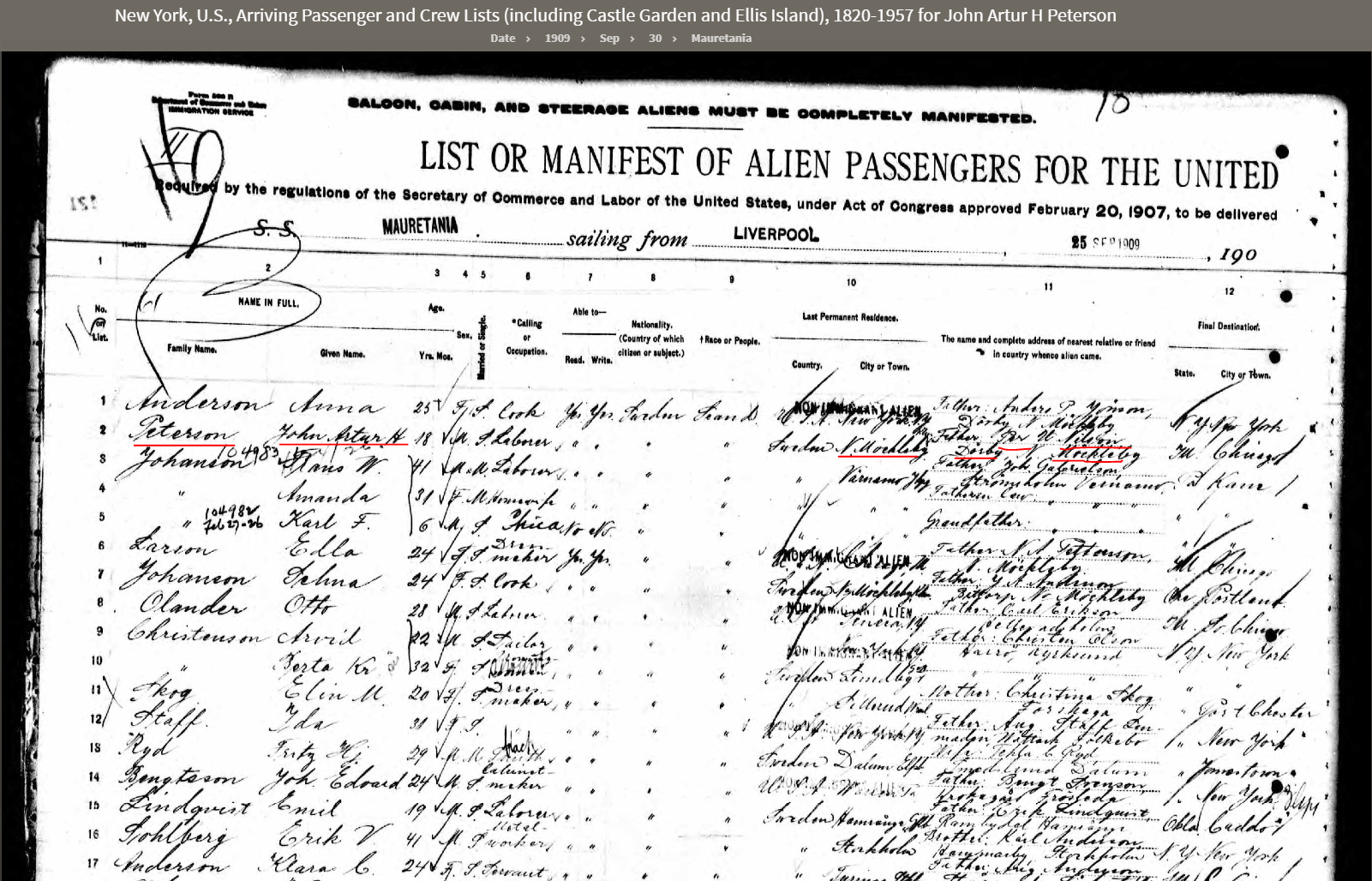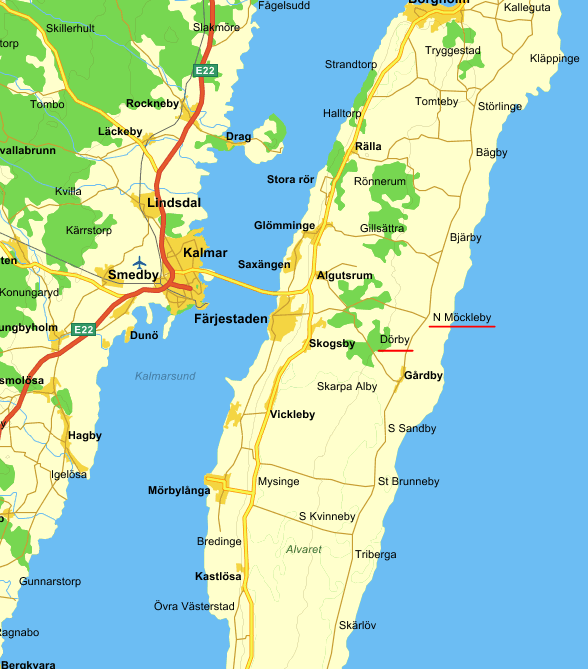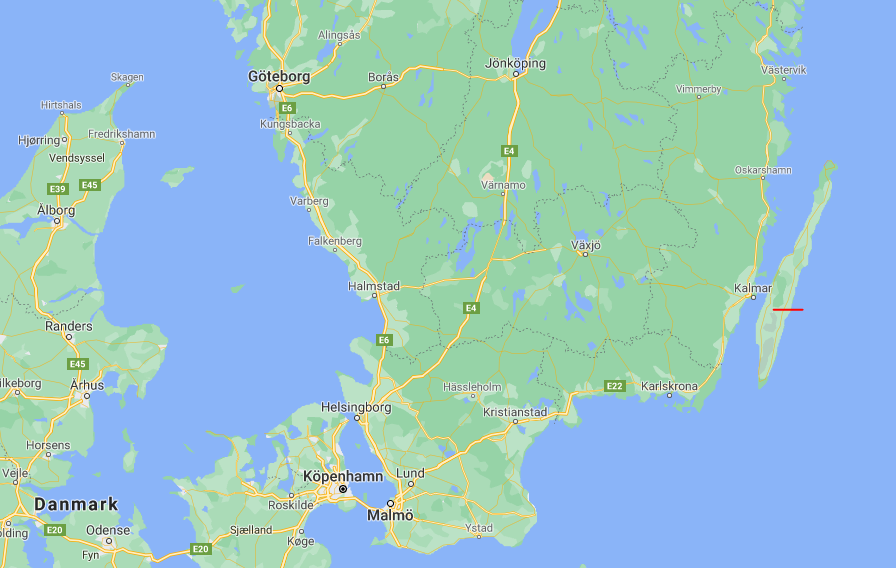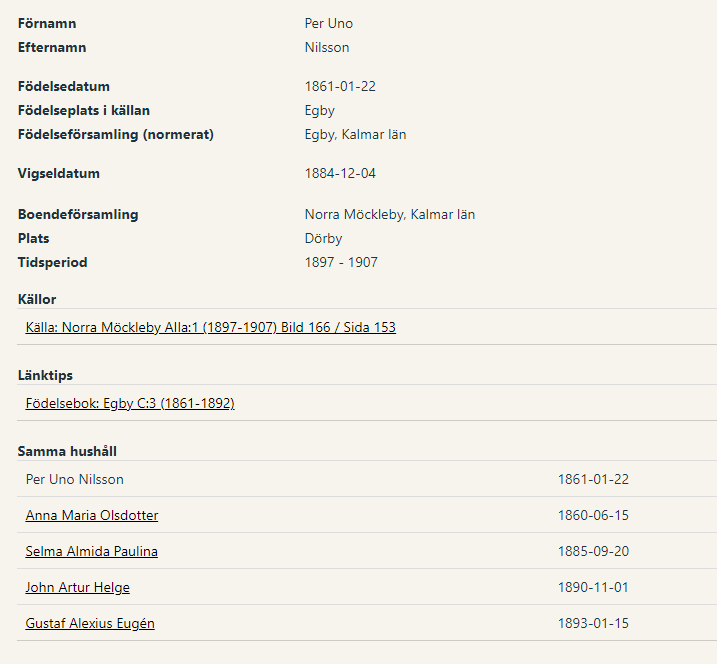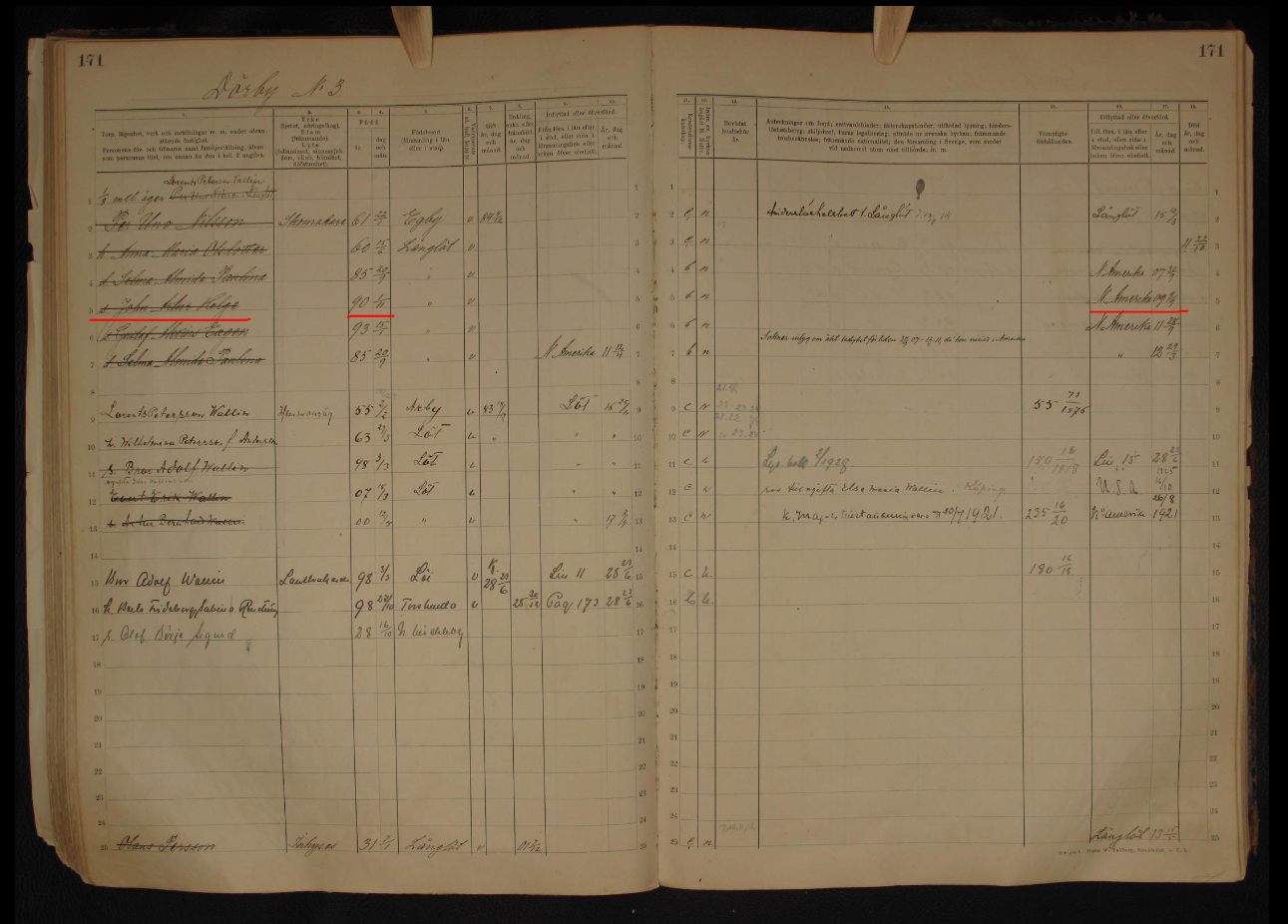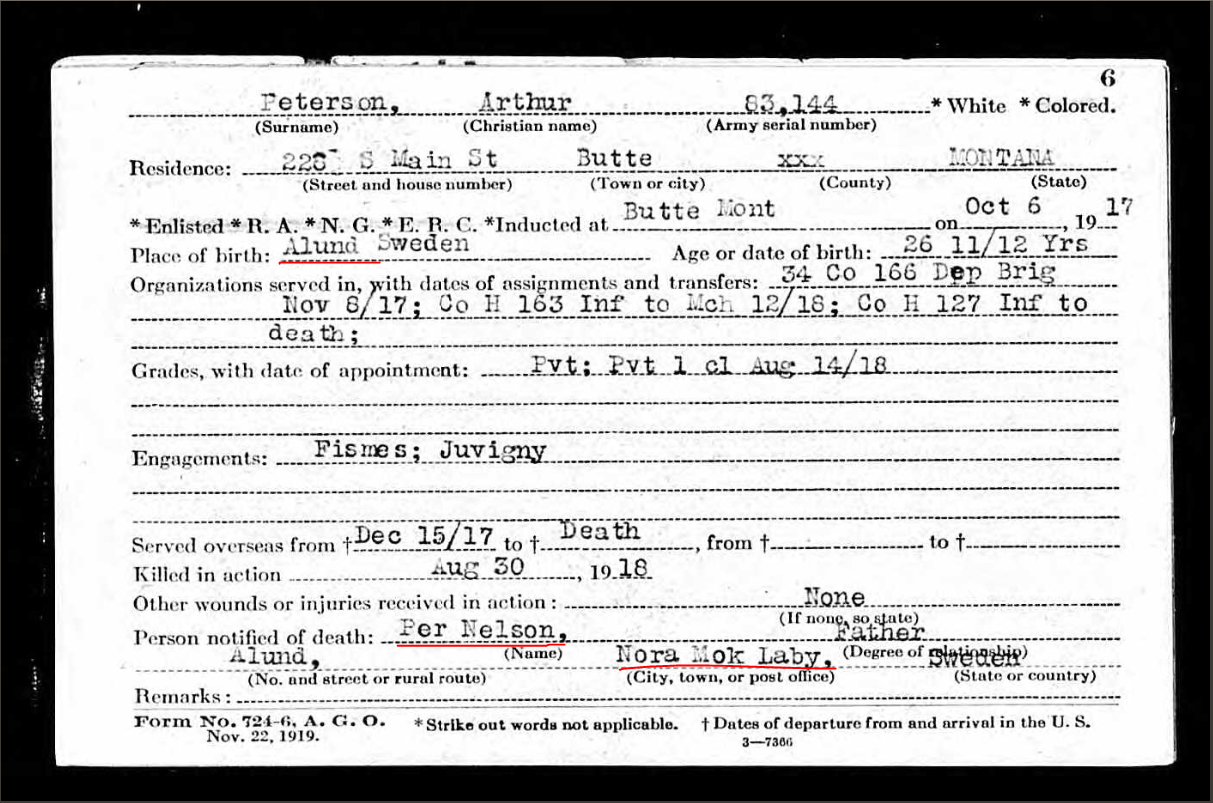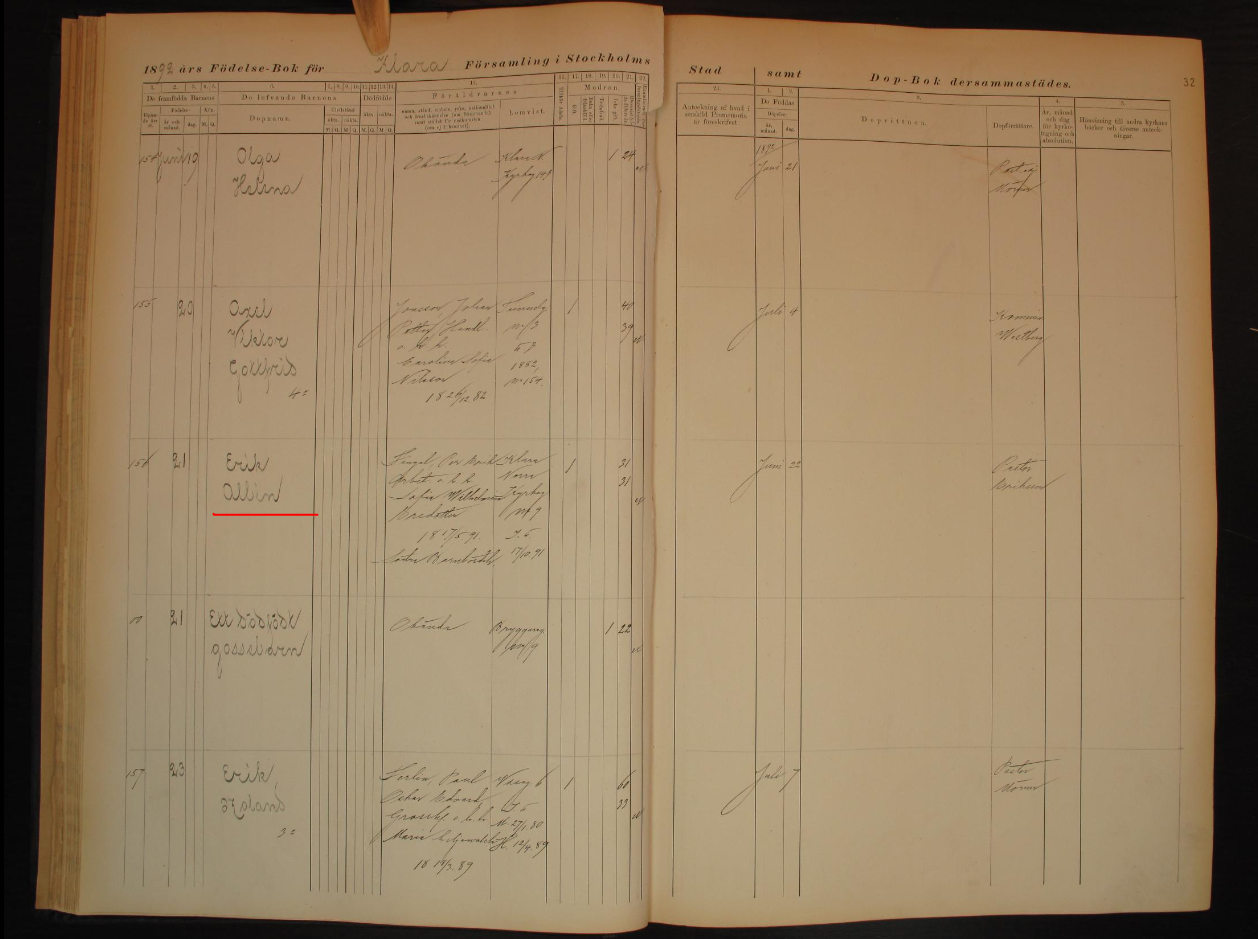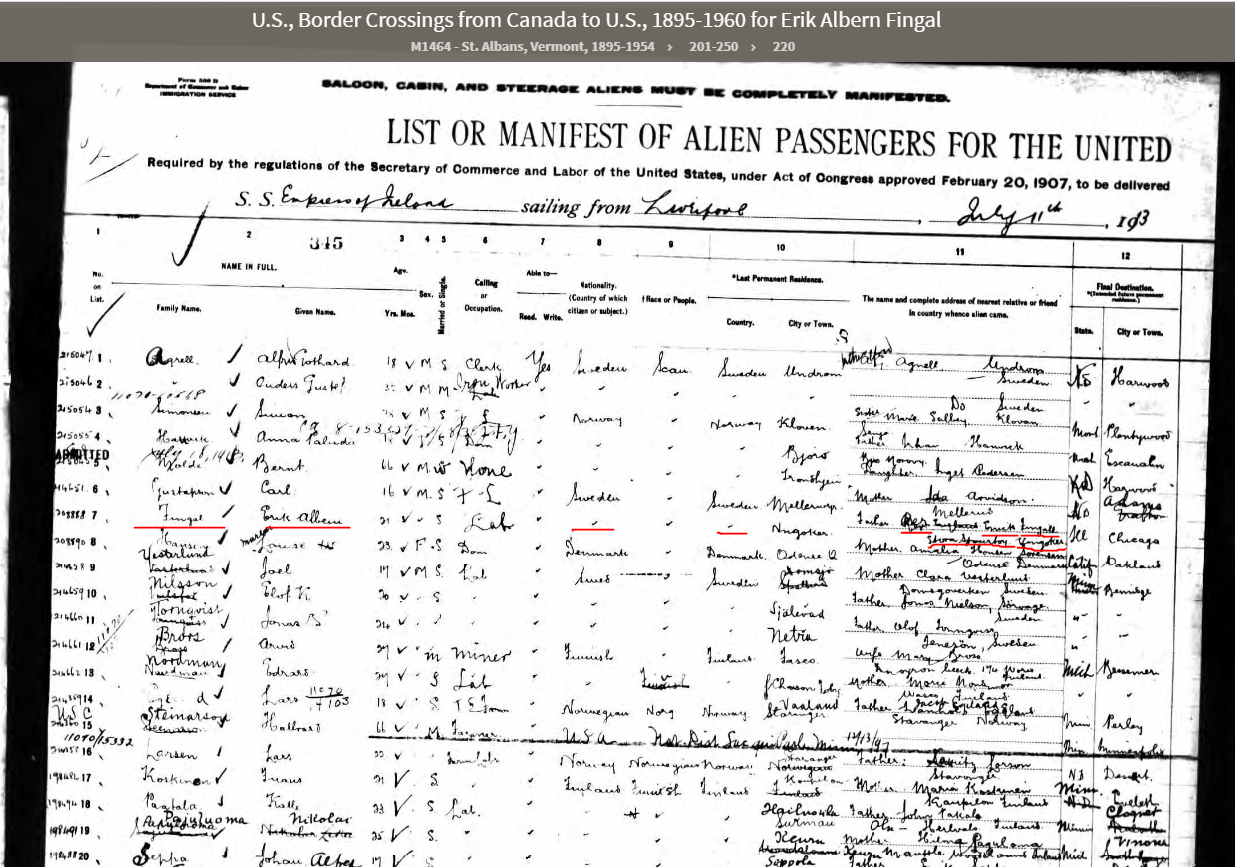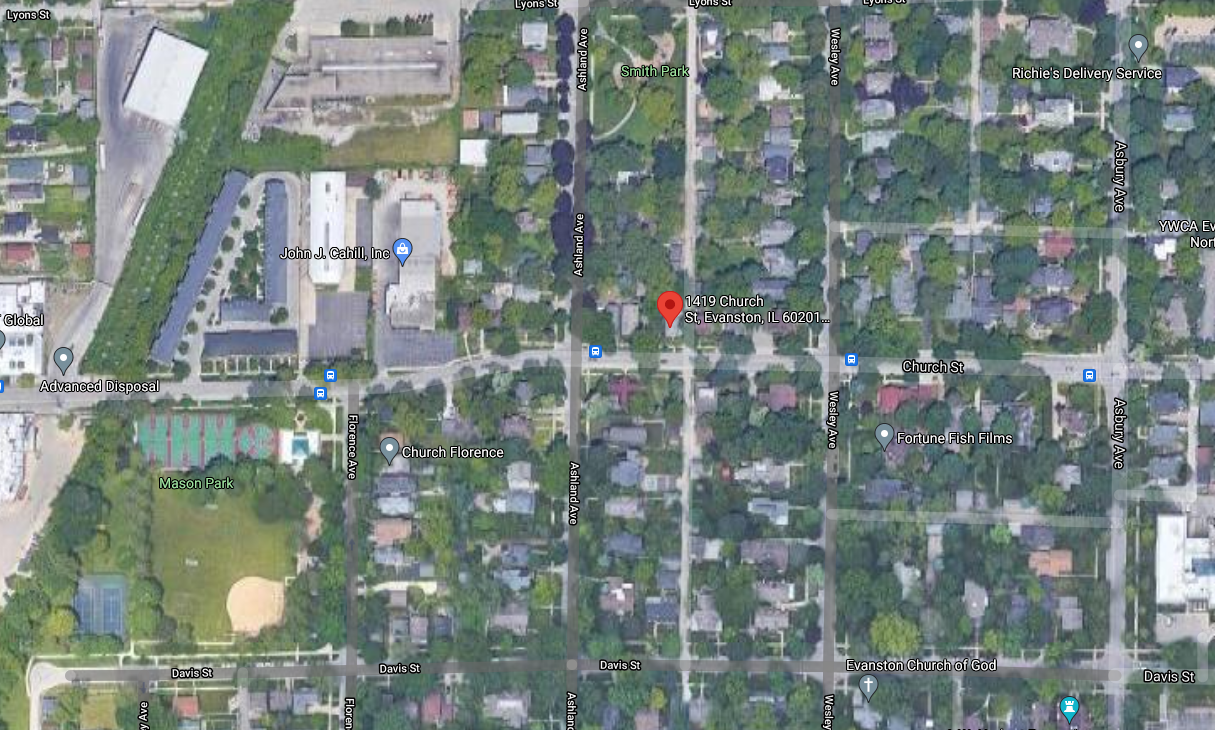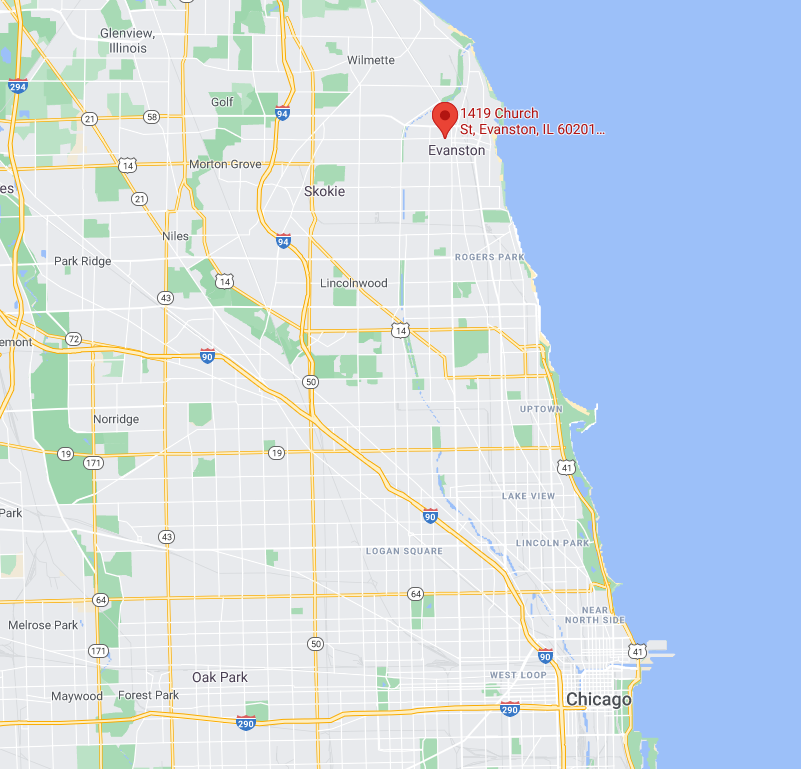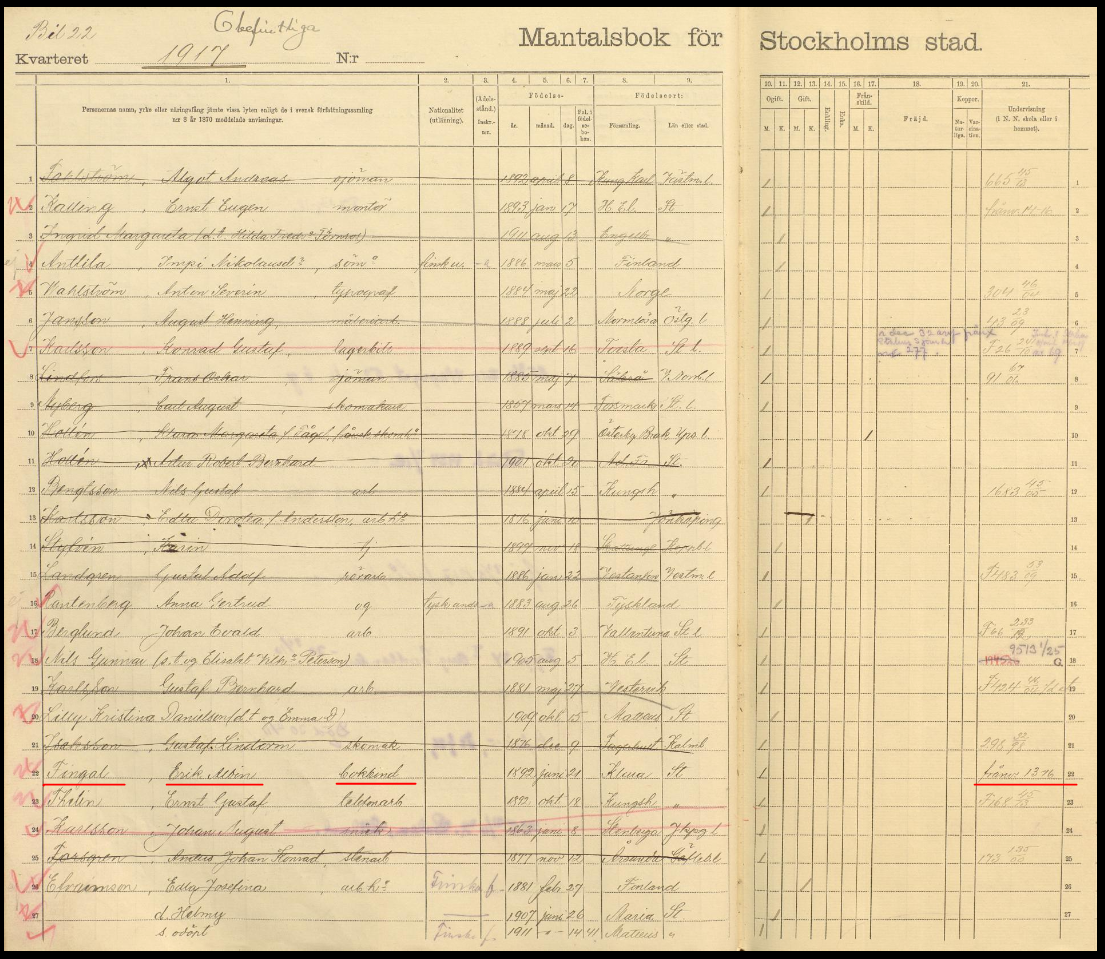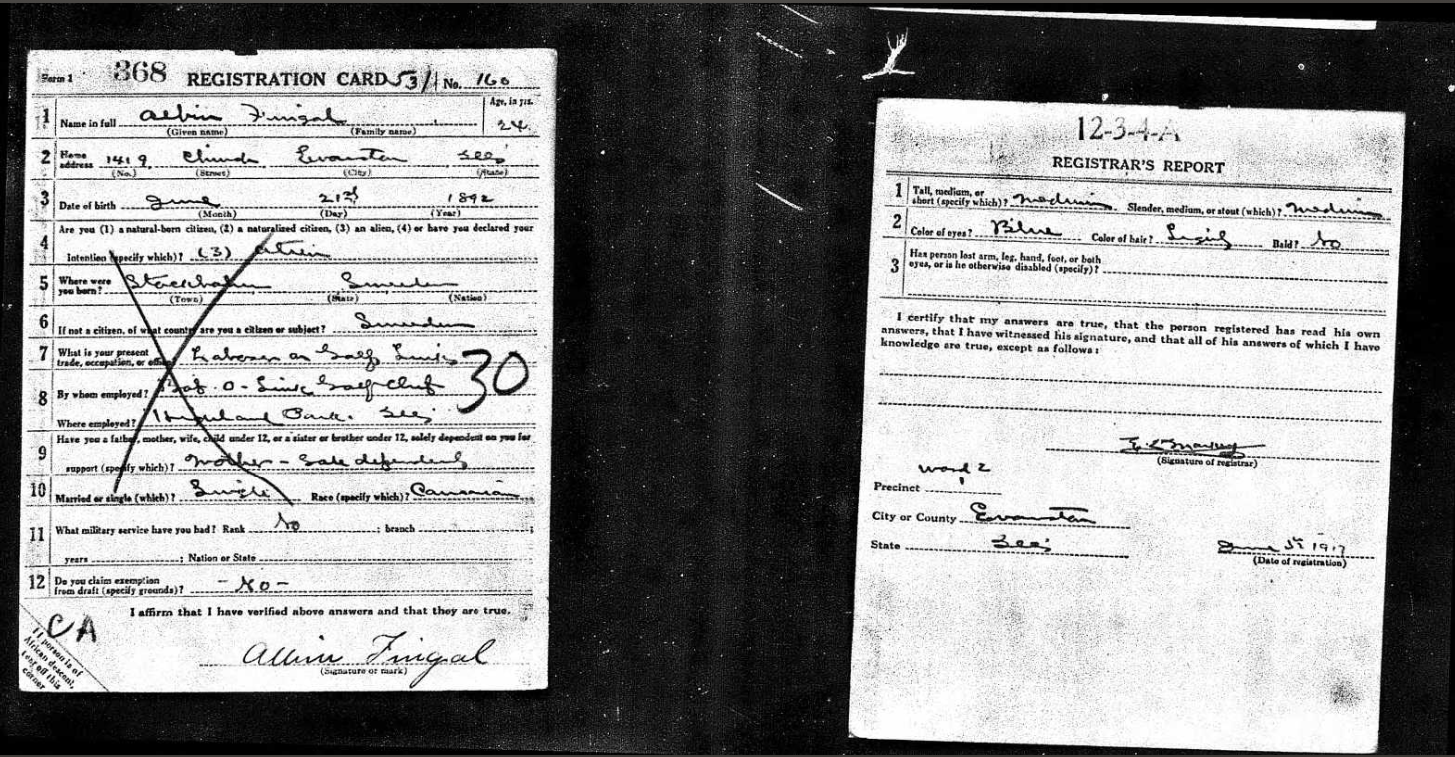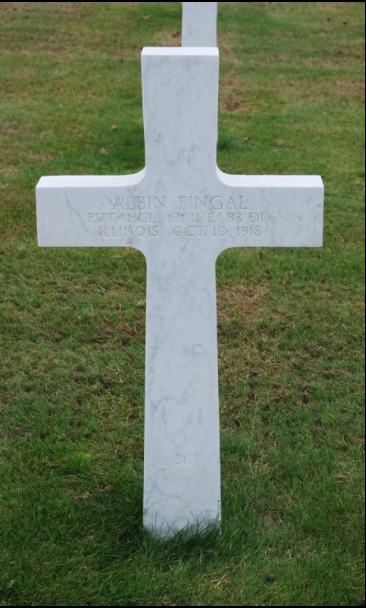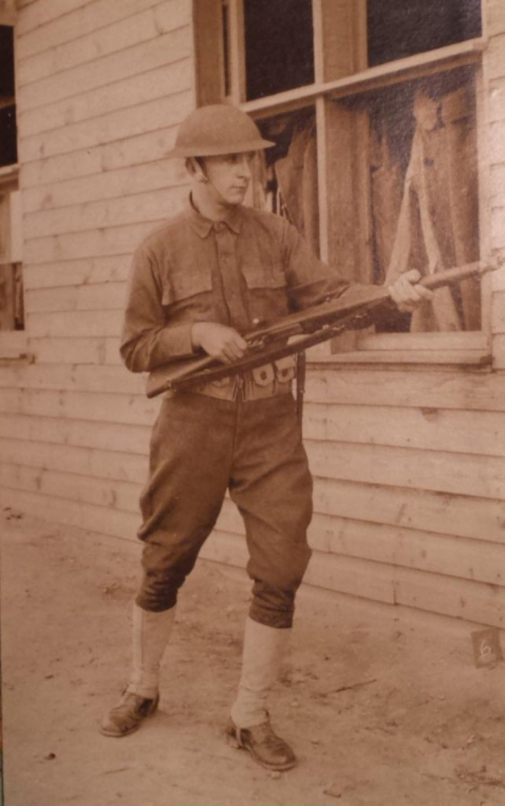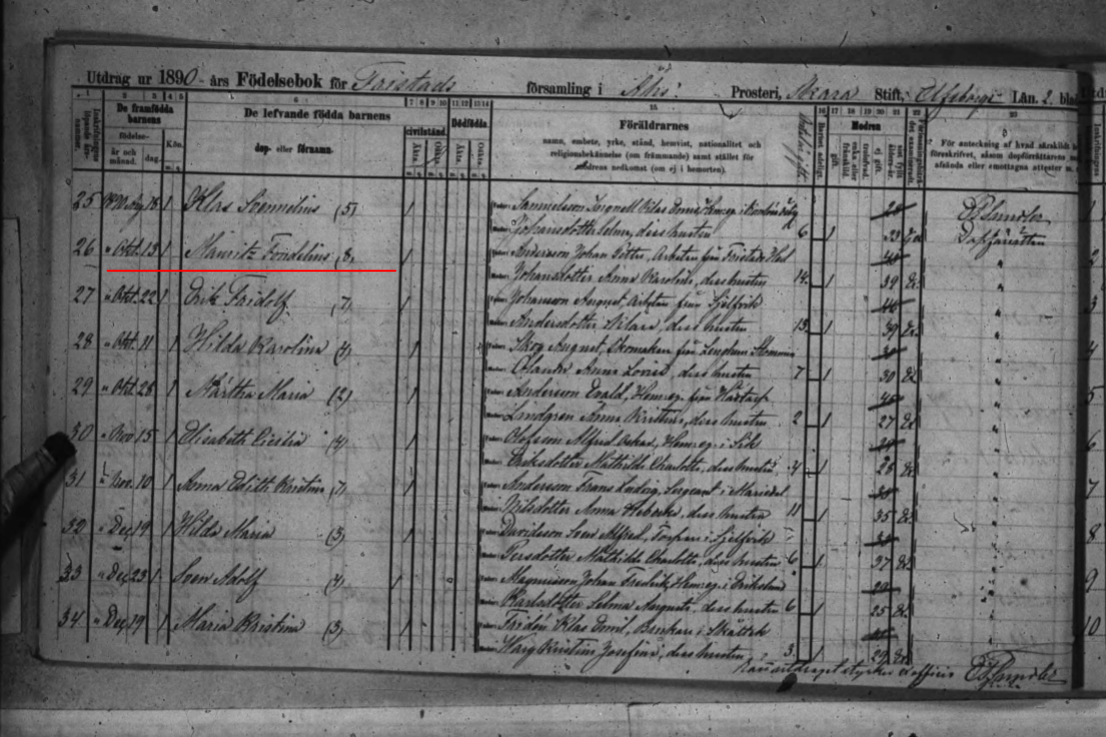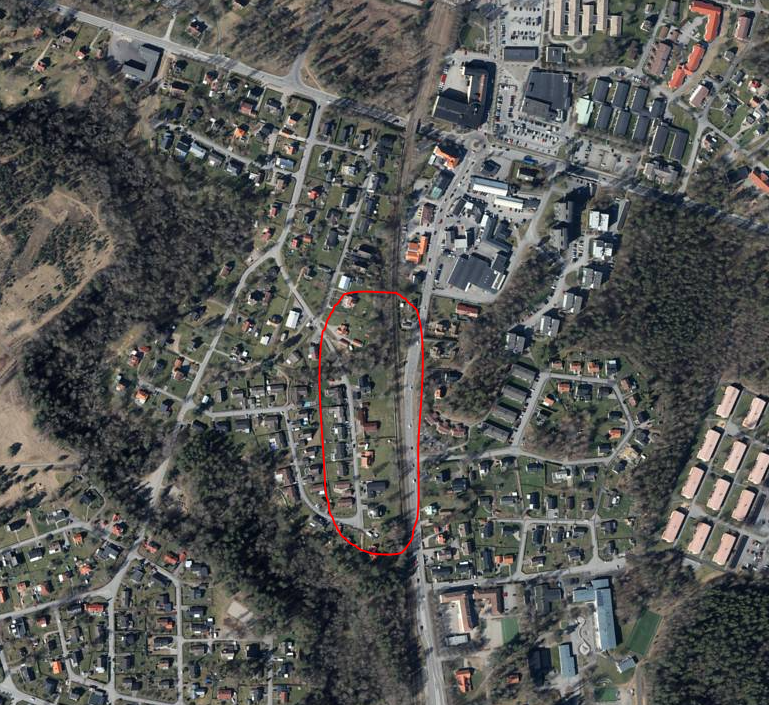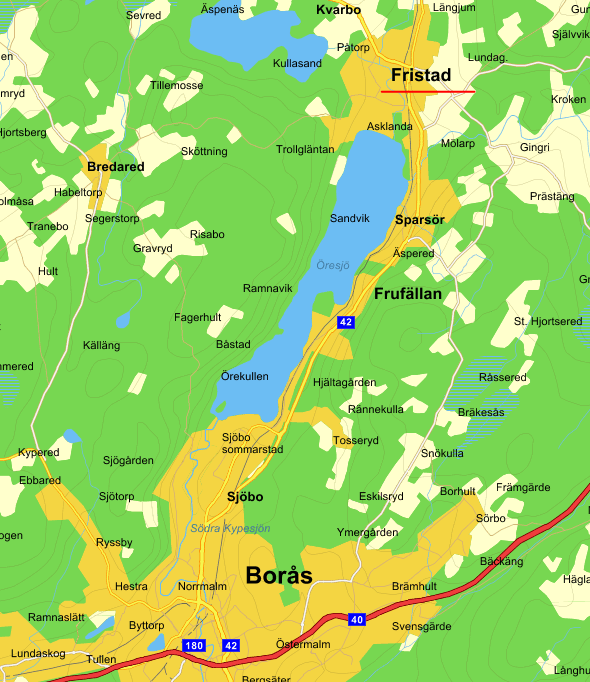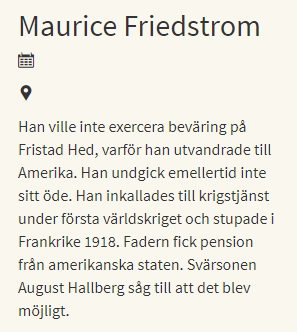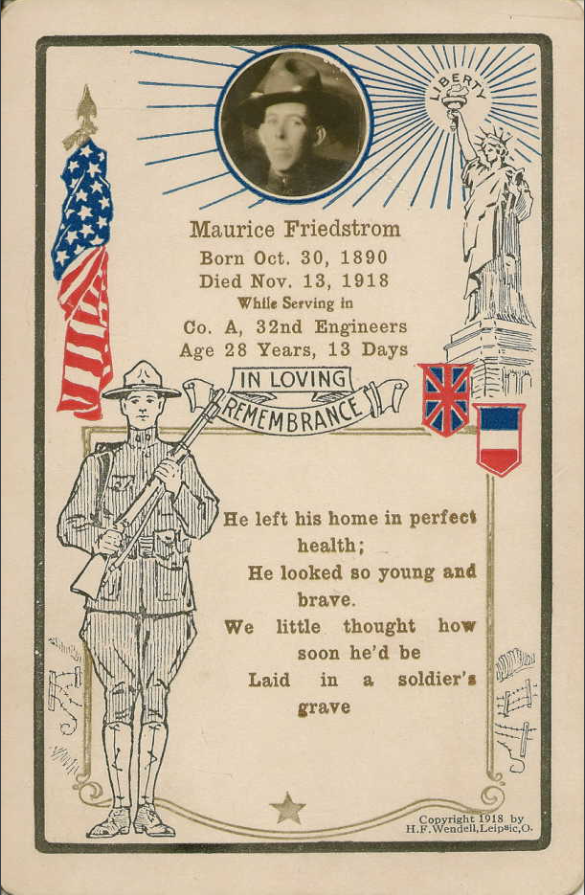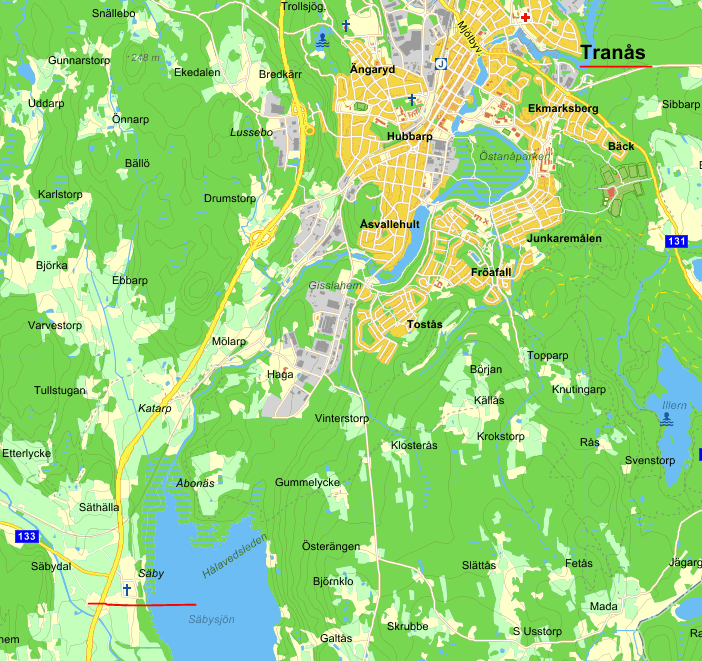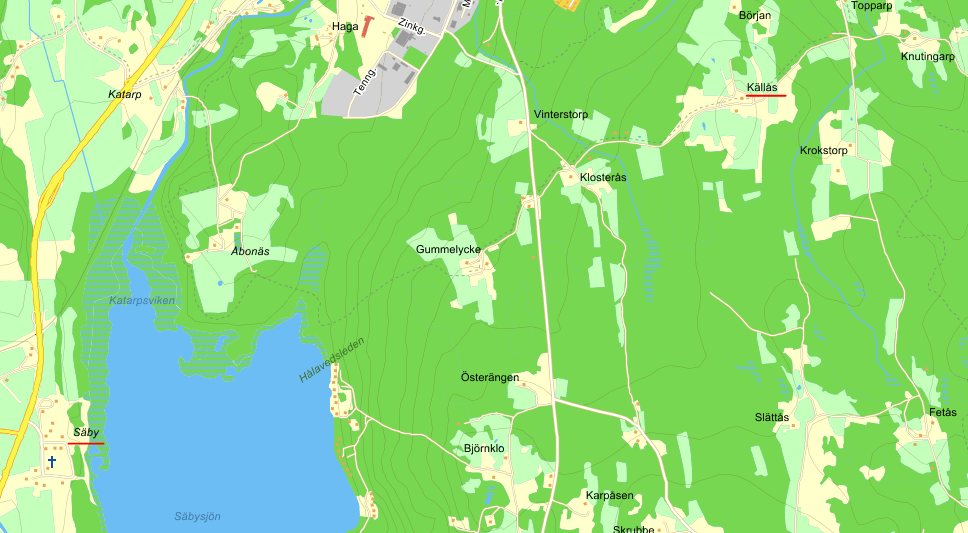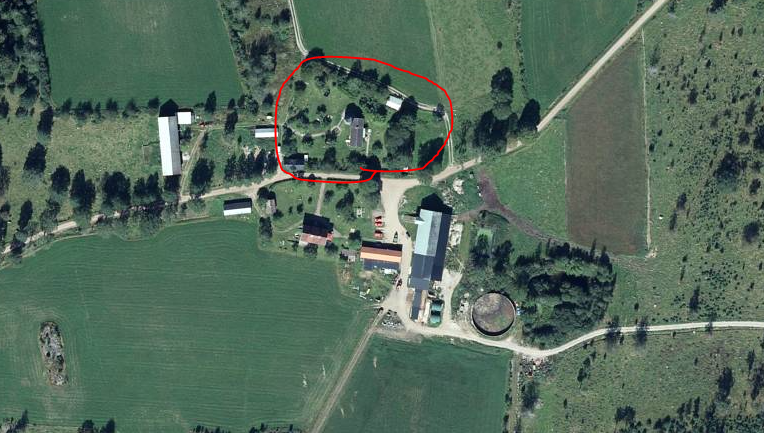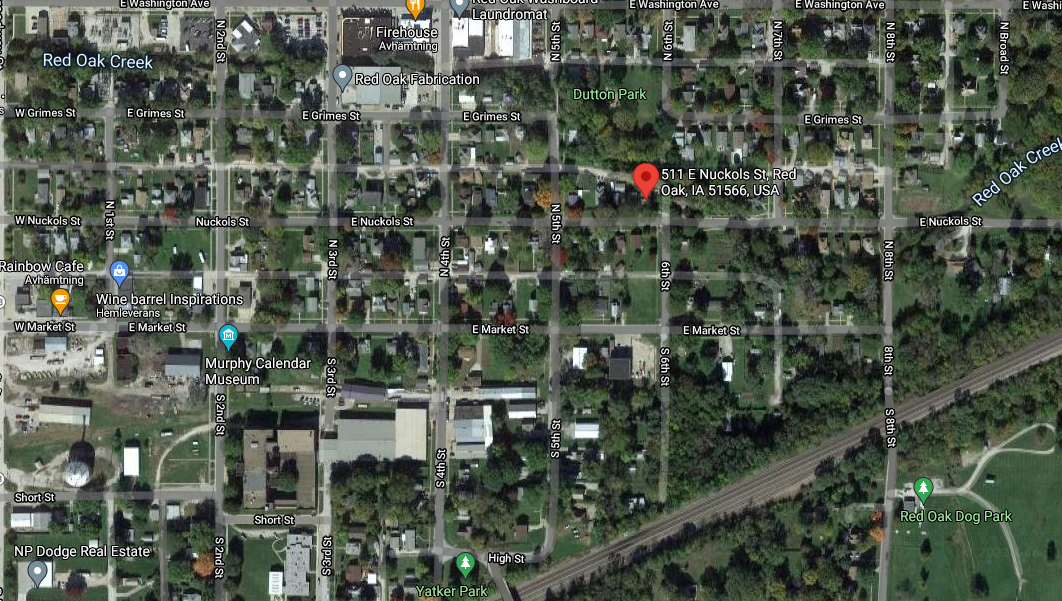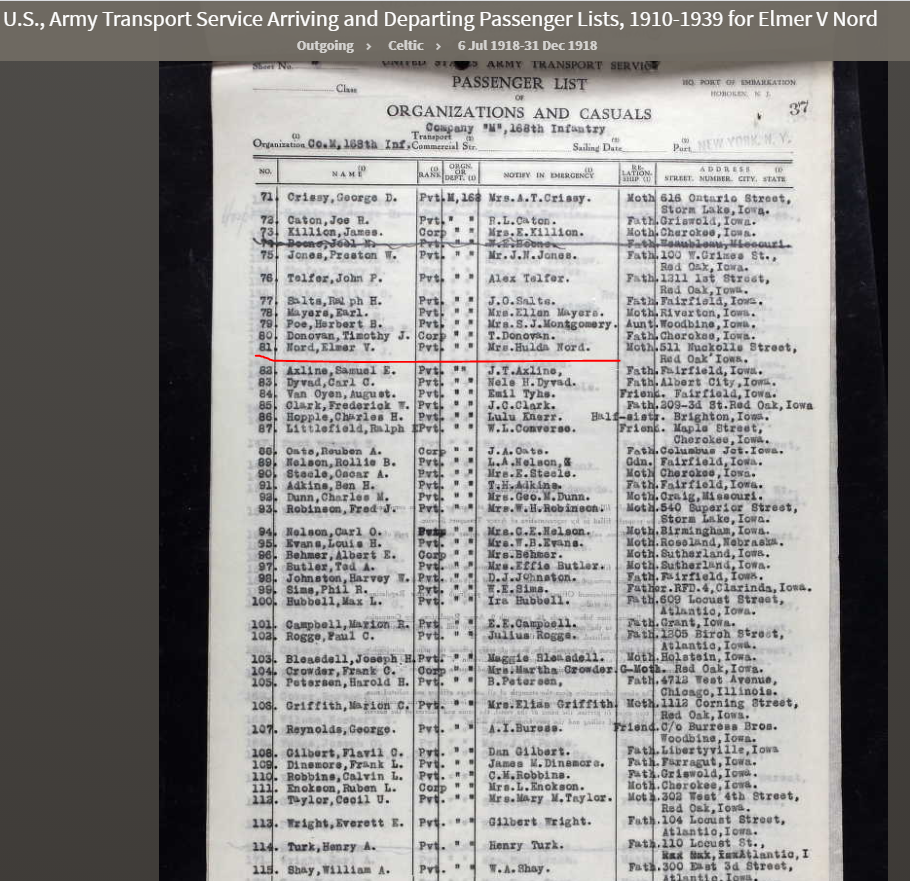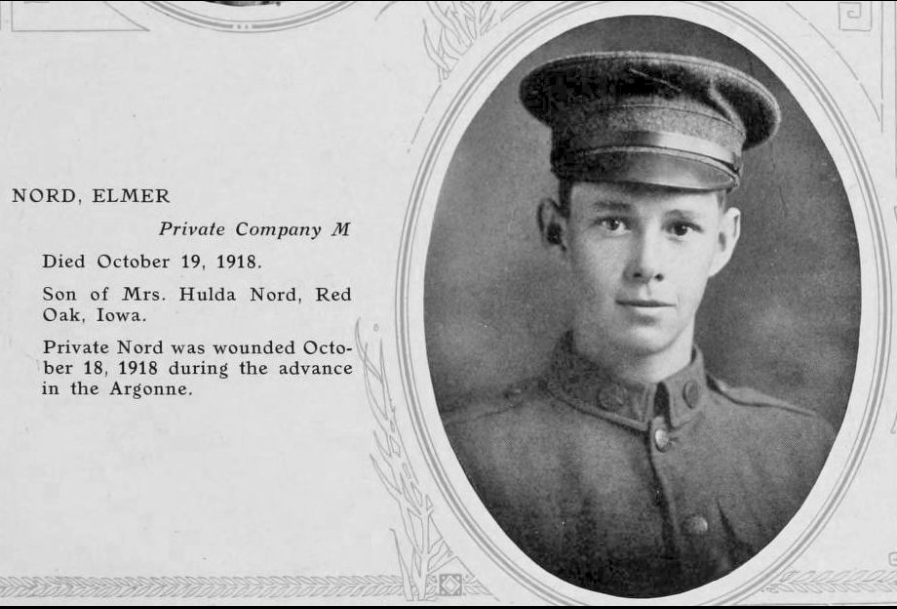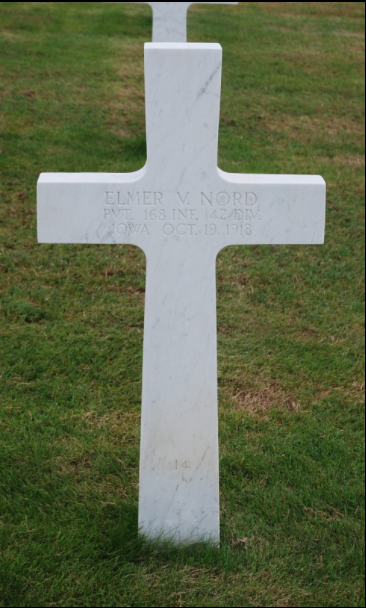This evening I am searching in some other archives than usual, and I came across one interesting document about a Swedish 2.Lt, who seems to have been killed in action in the Meuse Argonne Offensive in 1918. It turned out to be an interesting story.
The Swedish born soldier Nils Johan Holm, stated as Nils Holm in the documents from the American Expeditionary Forces, was born in Harg parish in Östhammar, Stockholm, Sweden, and in his younger years he was raised by his parents Sofia Lovisa Traneus and Carl Robert Holm.
But when looking into the Swedish church books it looks like his parents went over to North America in 1898, leaving Nils Johan and his brother Karl Ludvig in Sweden by their mother’s parents, Gustaf Fredrik Traneus and his wife Katarina Karolina Lundin.
I also find in the church book a vague note about that Nils is leaving Sweden for North America in 1907, at an age of 16, and I can later on confirm that through documents about his emigration. It also looks like the family is reunited in North America, in the town of New York.
Nils is drafted in the 5th of June draft in 1917, and he is sent over to France in April 1918. Articles in Swedish-American newspapers tells the story about Nils, that he went over as a private, but quite soon showed some skills in leadership, and was sent to an officer course in France, and became 2nd Lt in the 4th Infantry Regiment, 3rd Division, American Expeditionary Forces.
He was appointed to 2nd Lt in October 1st, 1918, quite fast progression, for a reason not known.
Nils was fighting in the Meuse Argonne Offensive when he was killed in action october 31st, 1918. His name is found in the Missing in Action tablet in Meuse Argonne American Cemetery, in France. The two newpaper articles is in Swedish, but I have made a short summary in this post.
It is very interesting to find the story about Nils, when reading the old digitised newspapers, which tells the story about about a young Swede who lived in New York, after have emigrated in quite young age, and how he worked as a private driver to a leader in the paper industry in New York, Alvah Miller.
We now know that he in in 1917 became connected to the Army, and later on went over to France.
The interesting with this result in my research is that I did not find Nils through the normal casualty cards from AEF, but from the cards in the New York archive with abstracts from WW1.
That leads me into thoughts that it may be more soldiers that doesn’t have a casualty card, but anyway became killed on the battlefield, which may mean that there are more Swedes to find? The future will tell.
Nils is now #401 in my research and within my criterias over Swedes who fell at the Western Front in the Great War. Maybe one day Nils will be found, and maybe he will get his own headstone. May Nils rest in peace.

